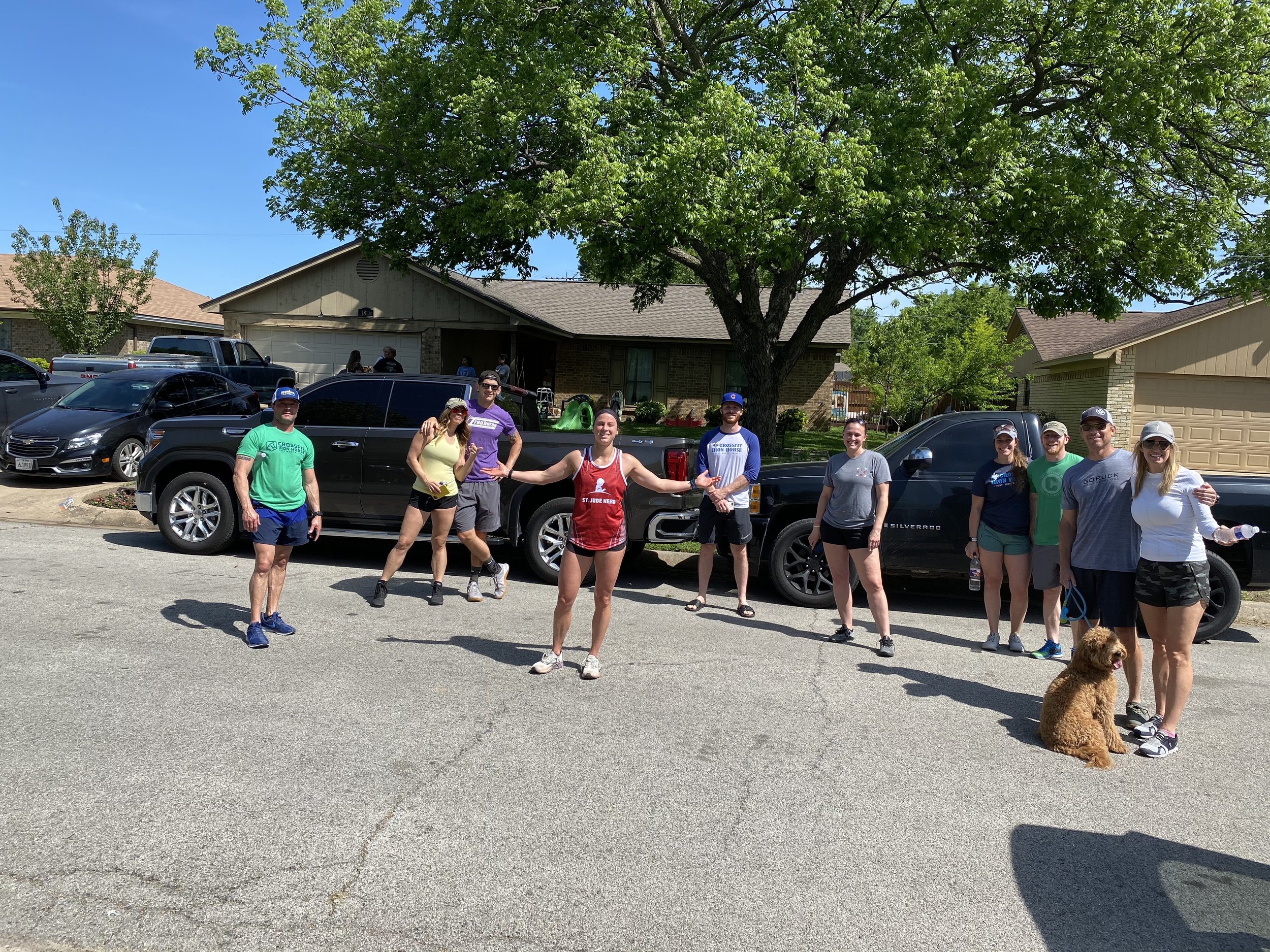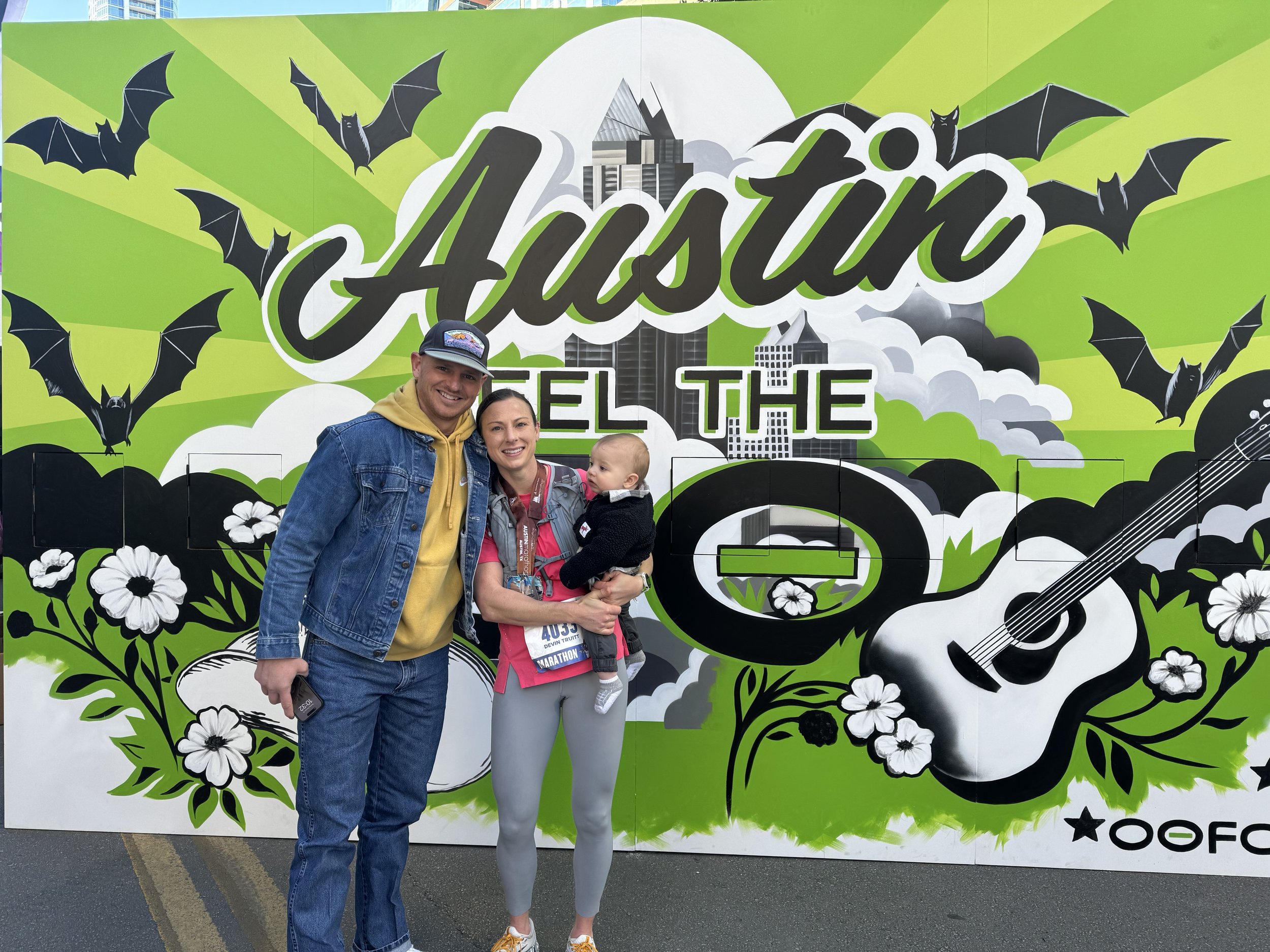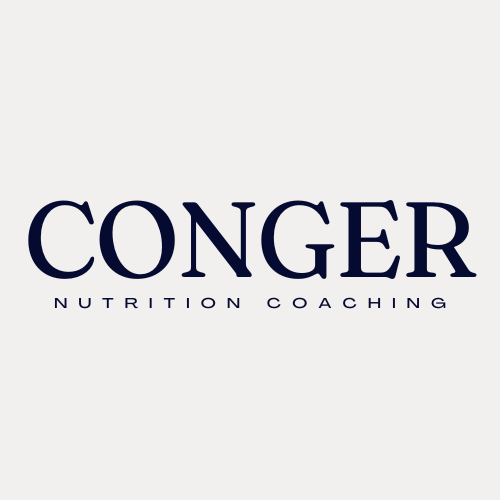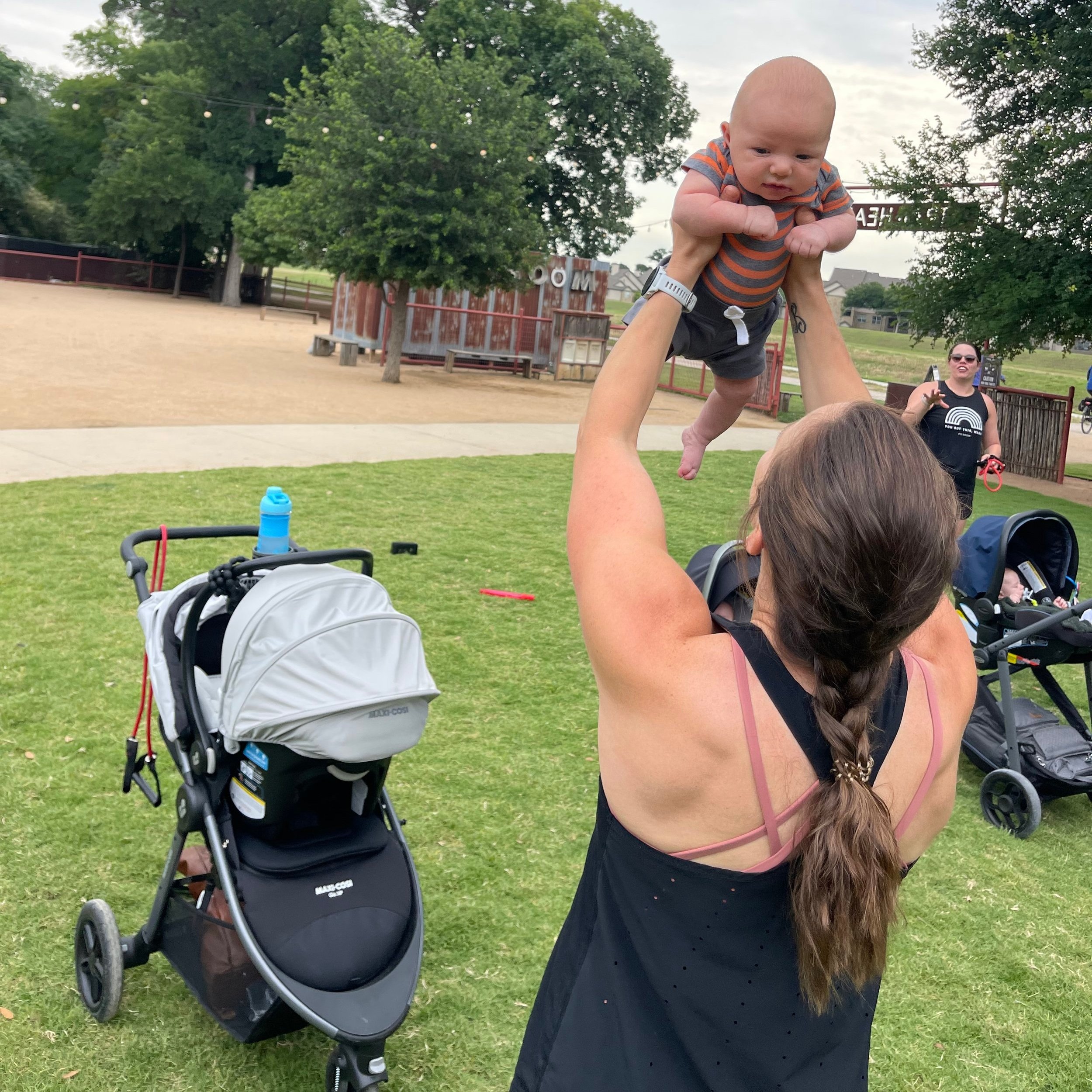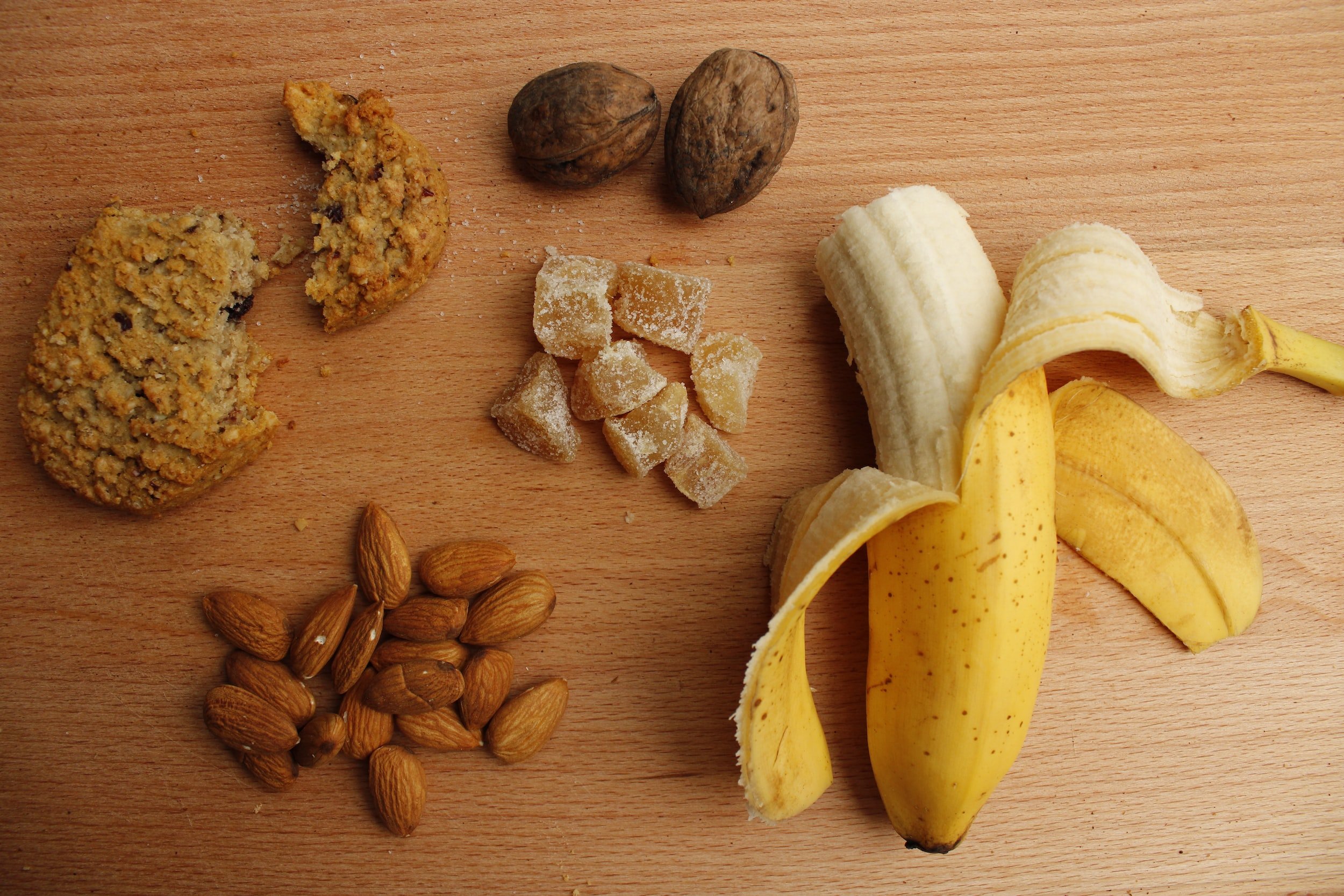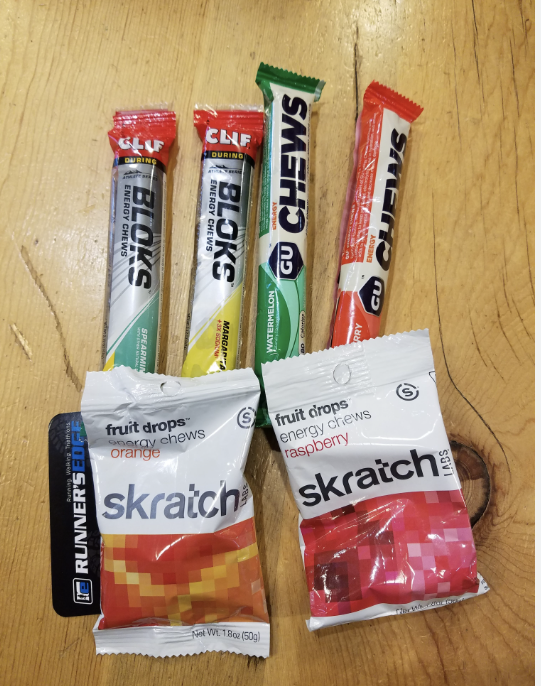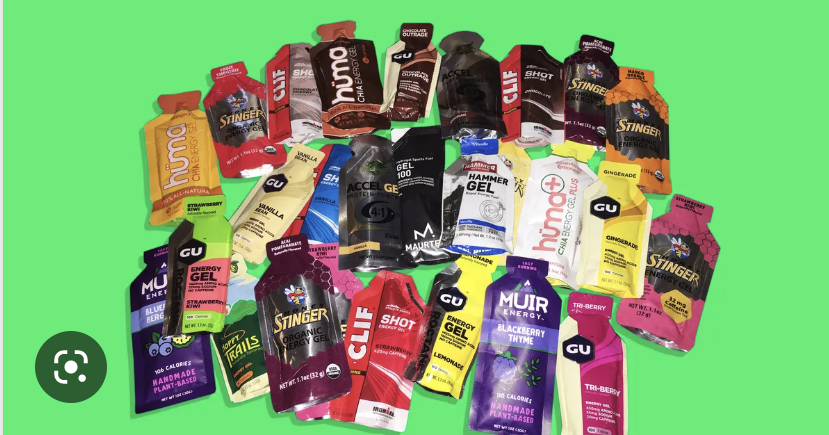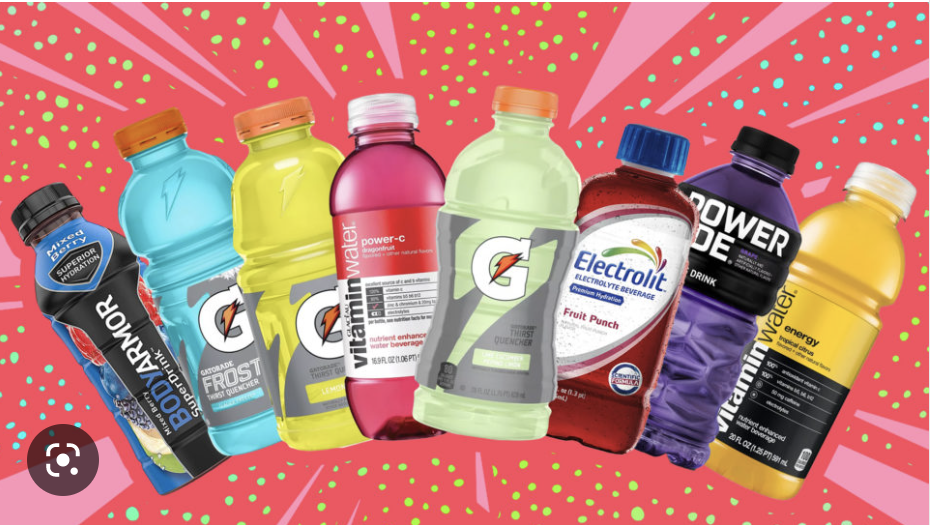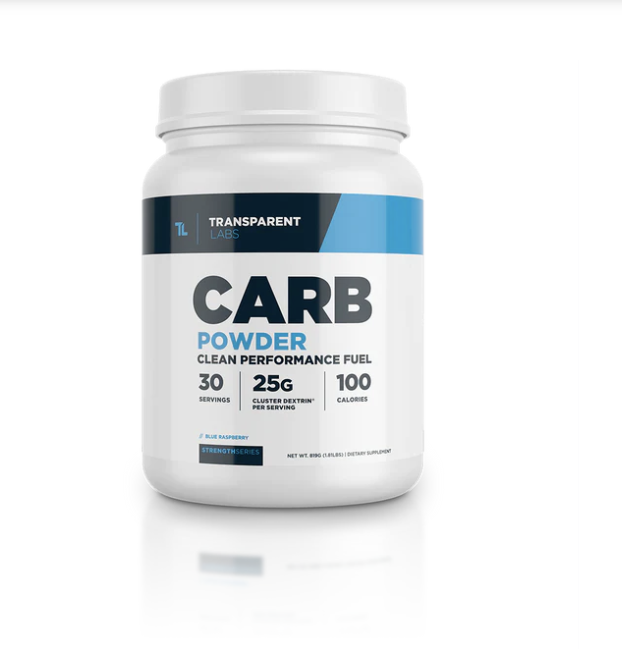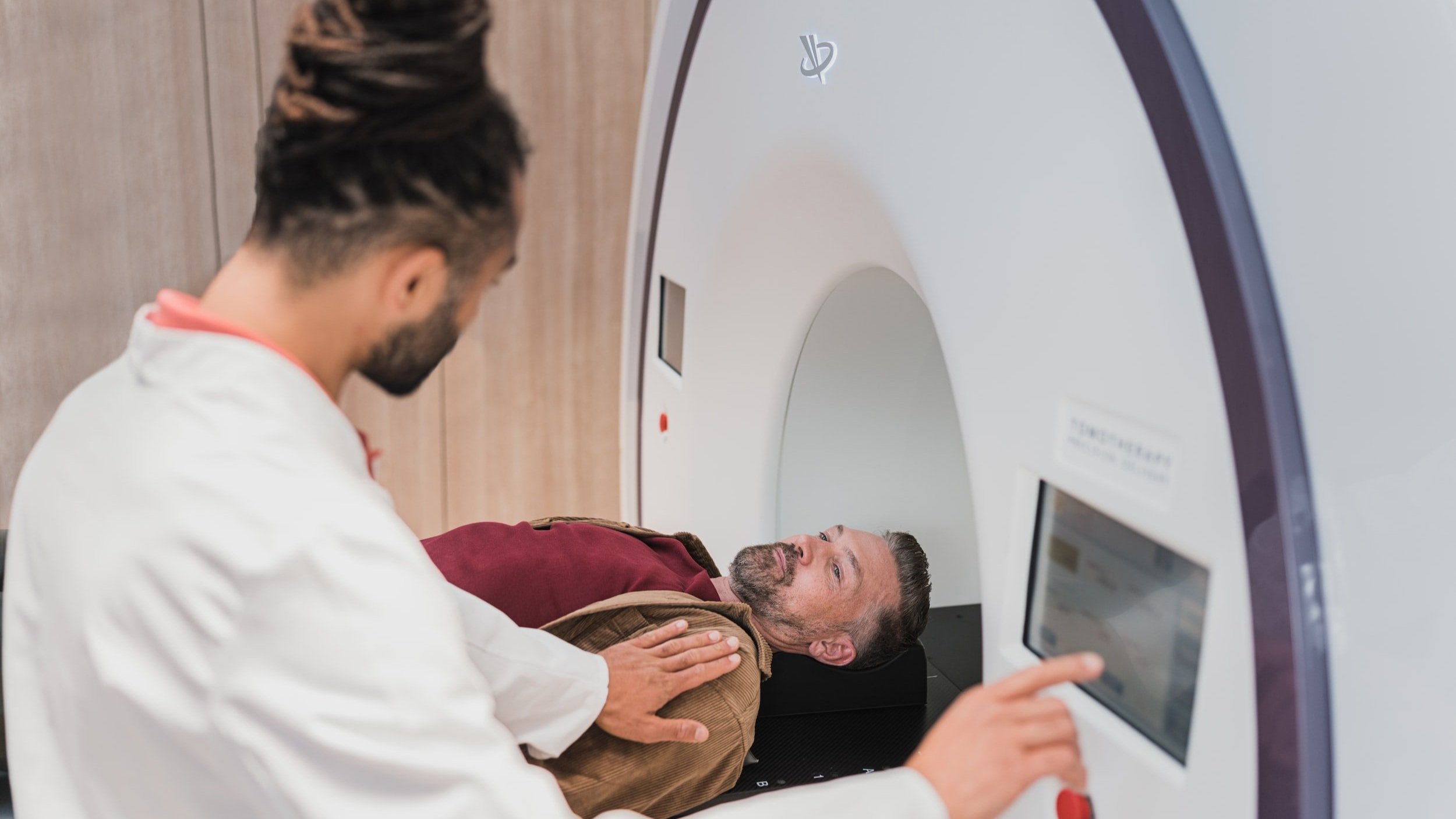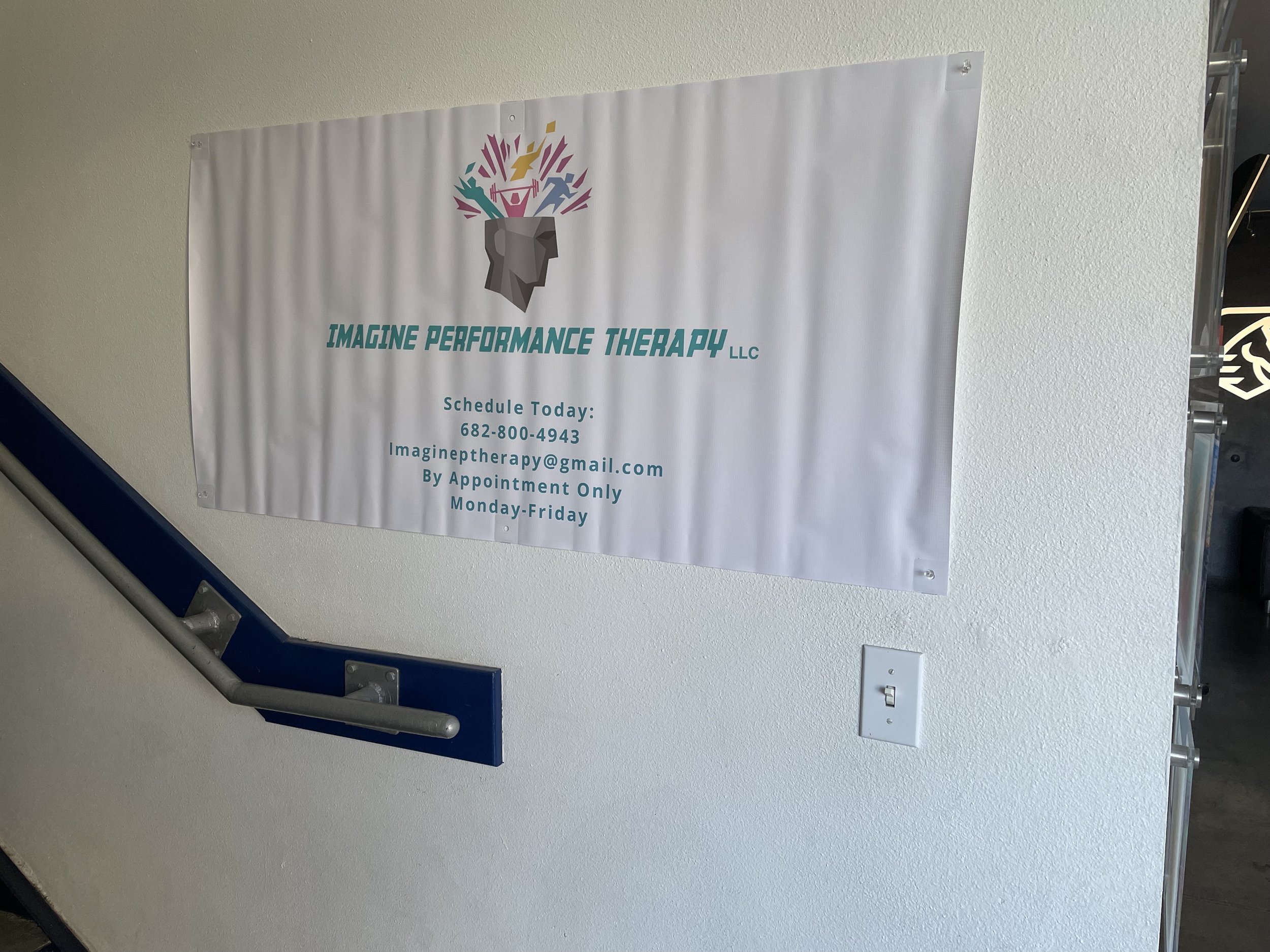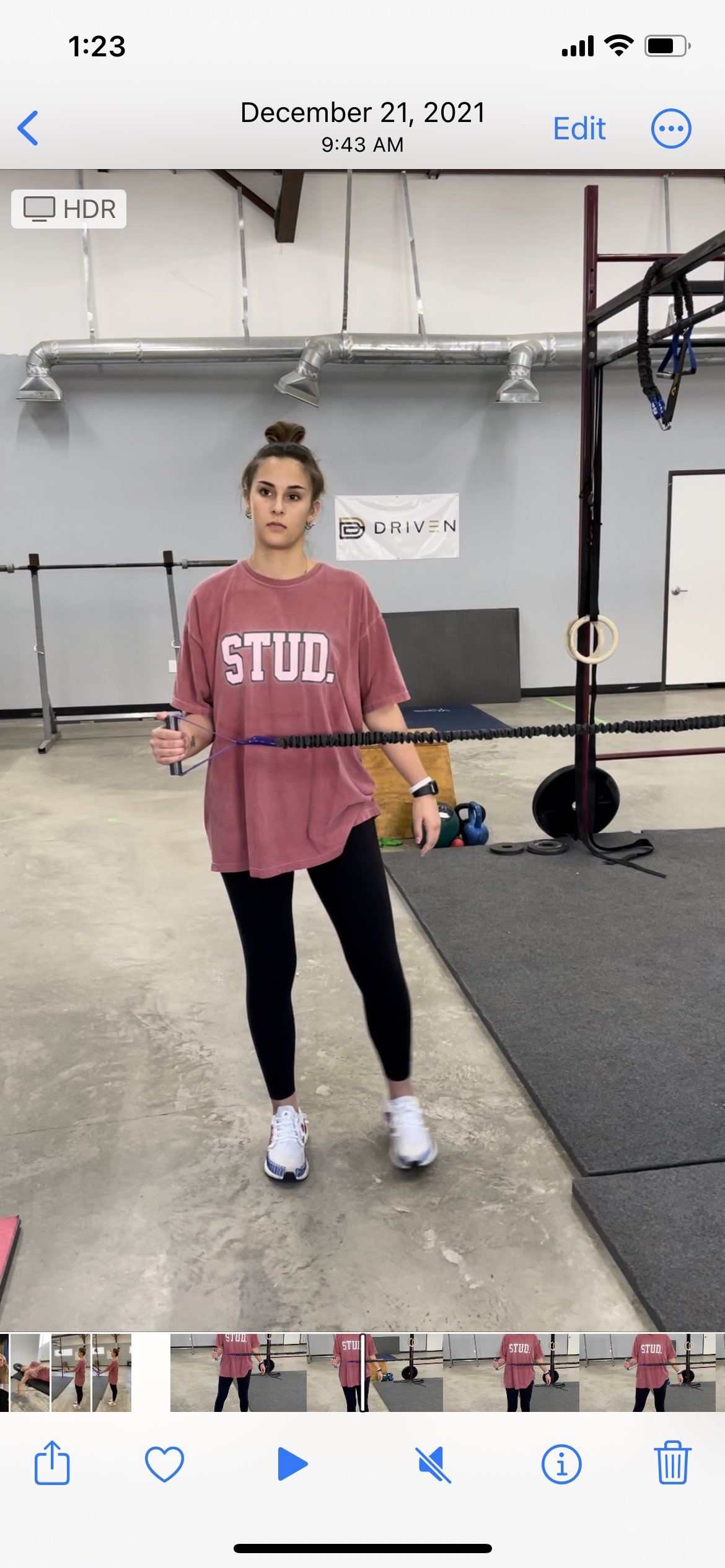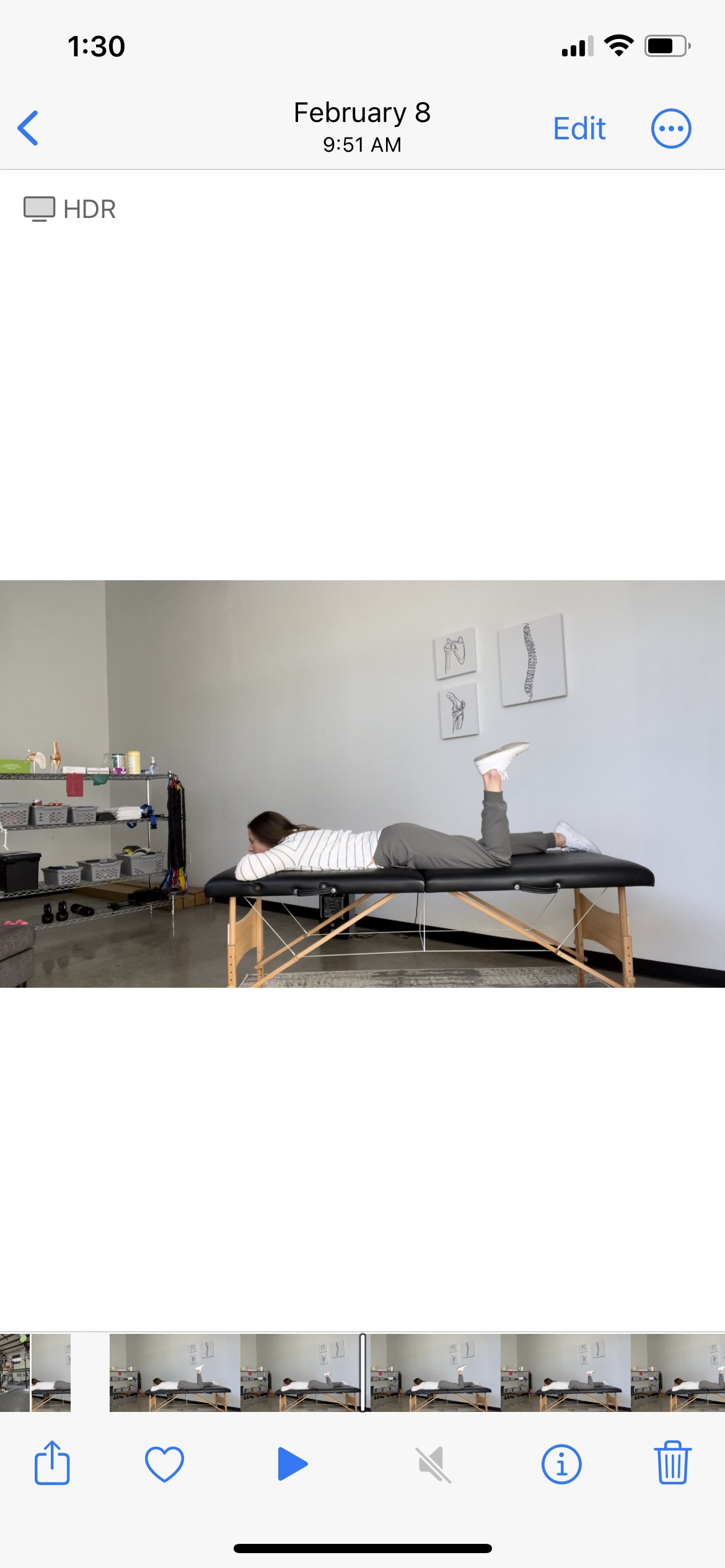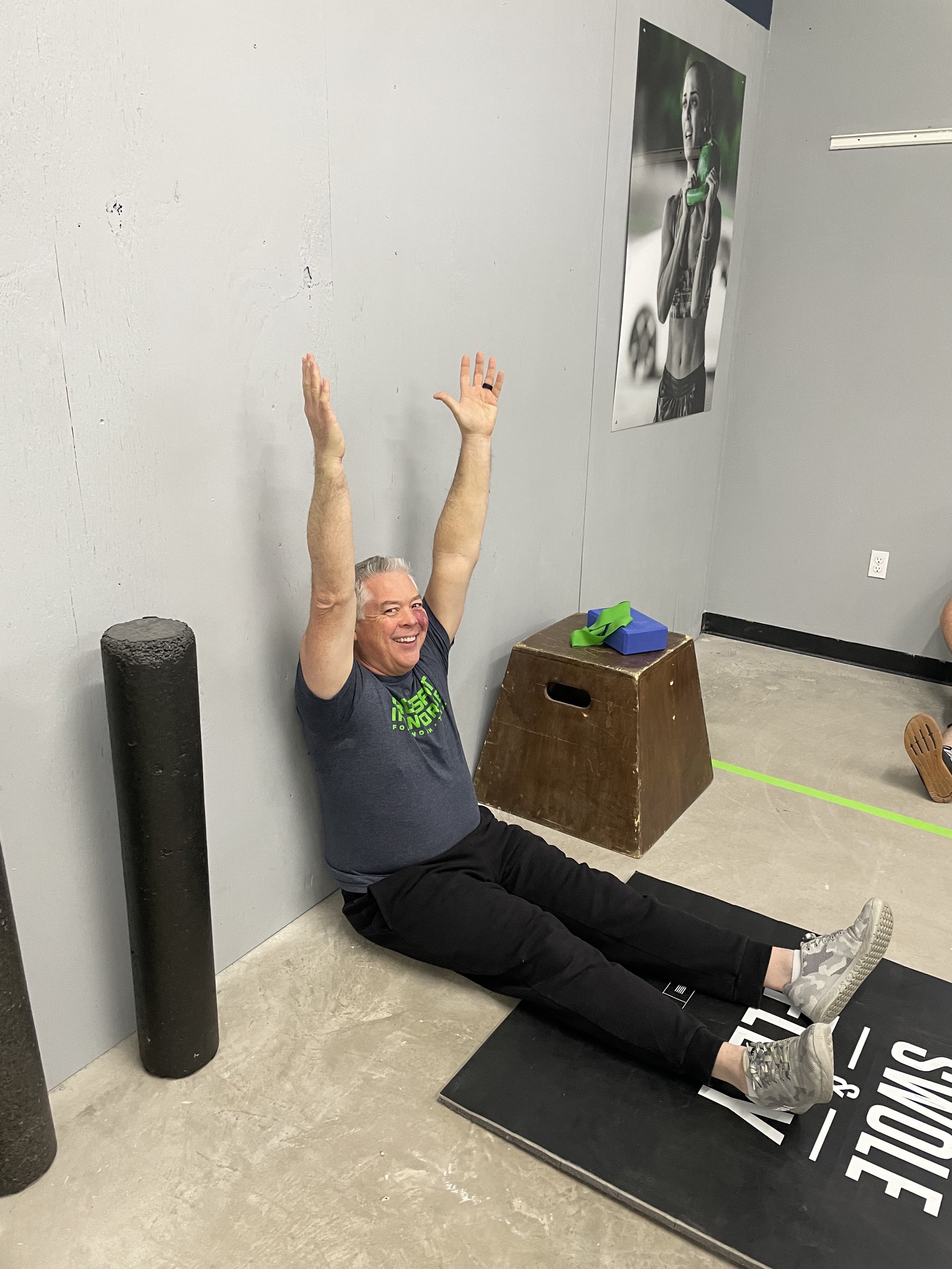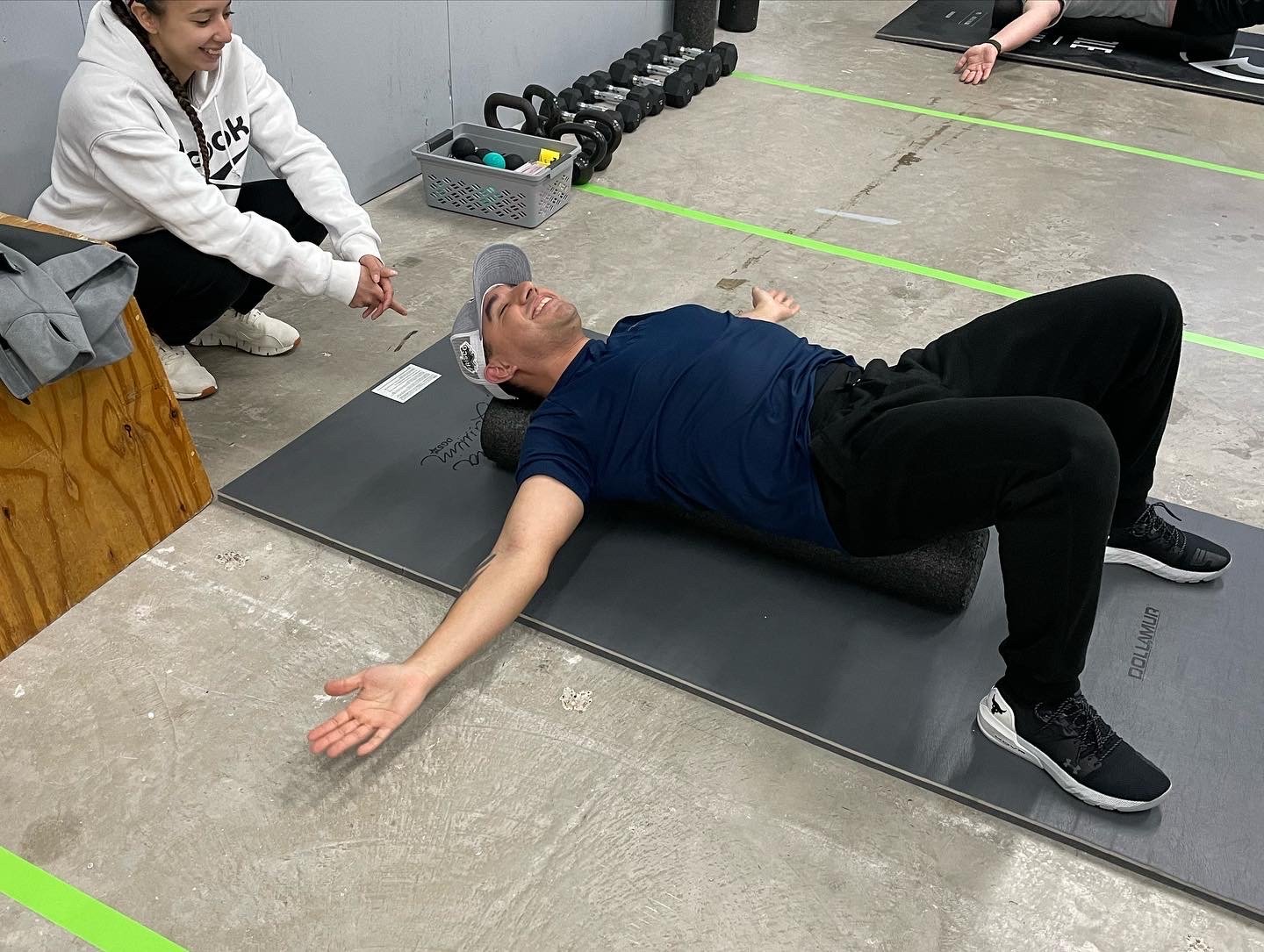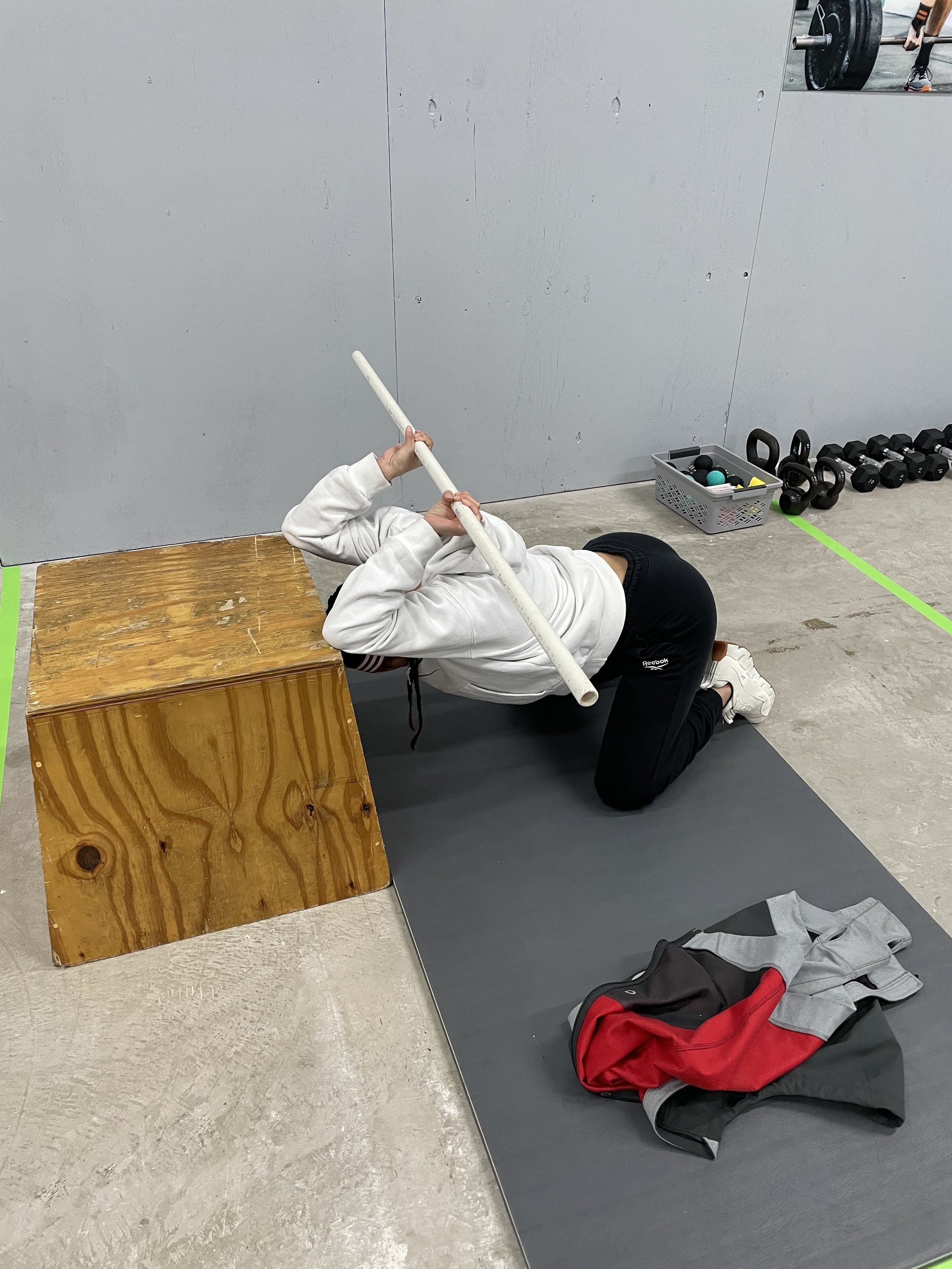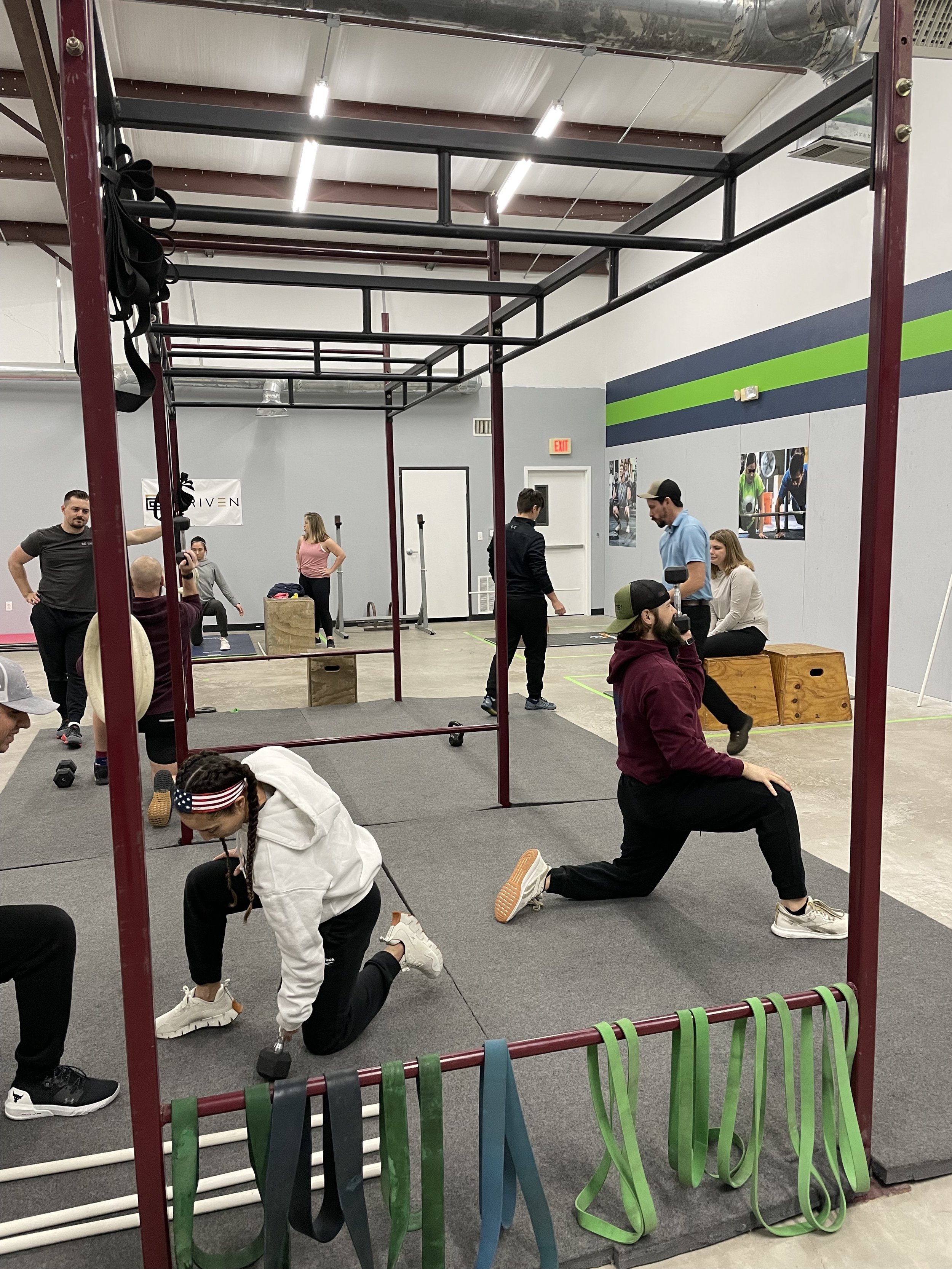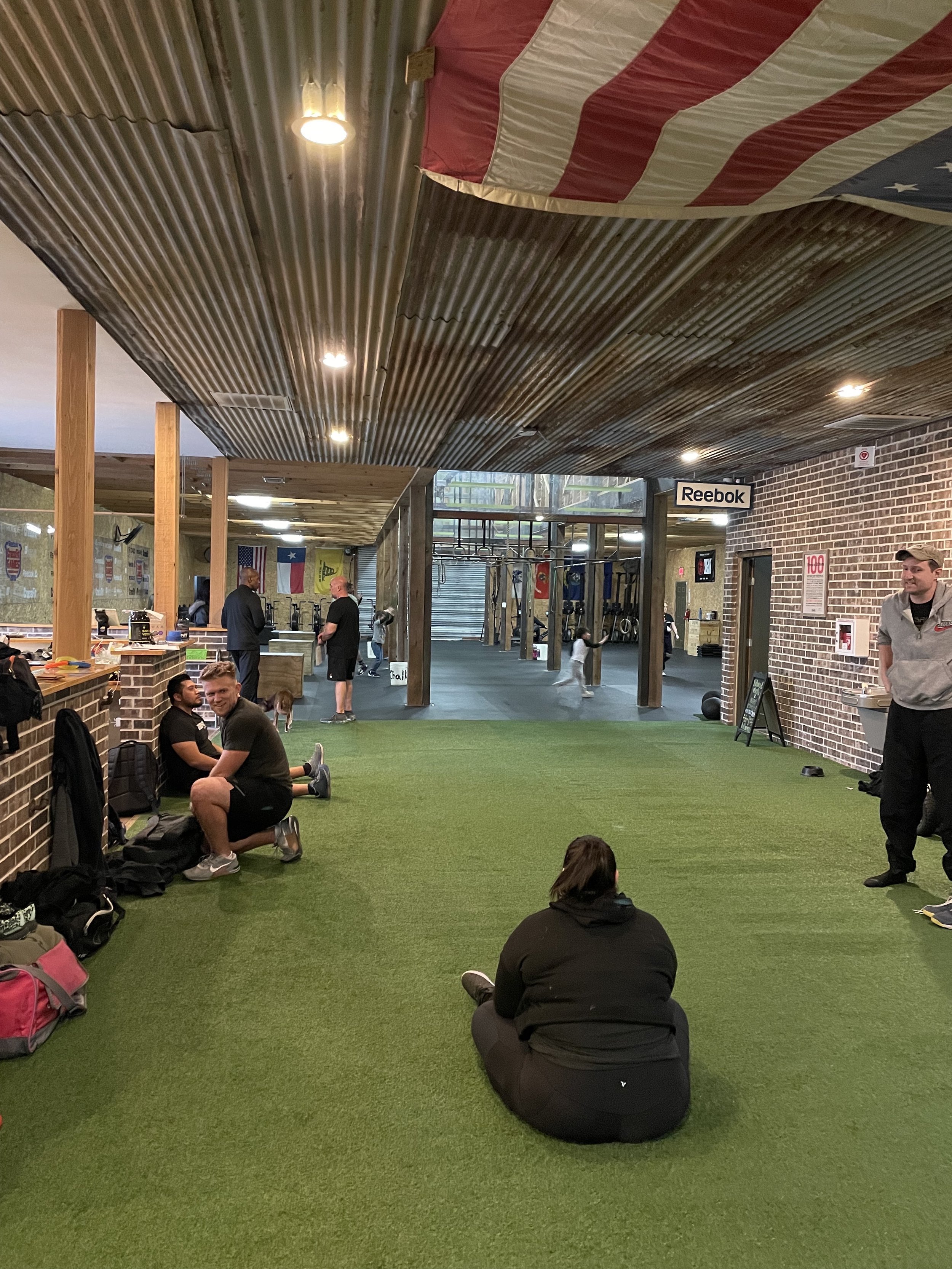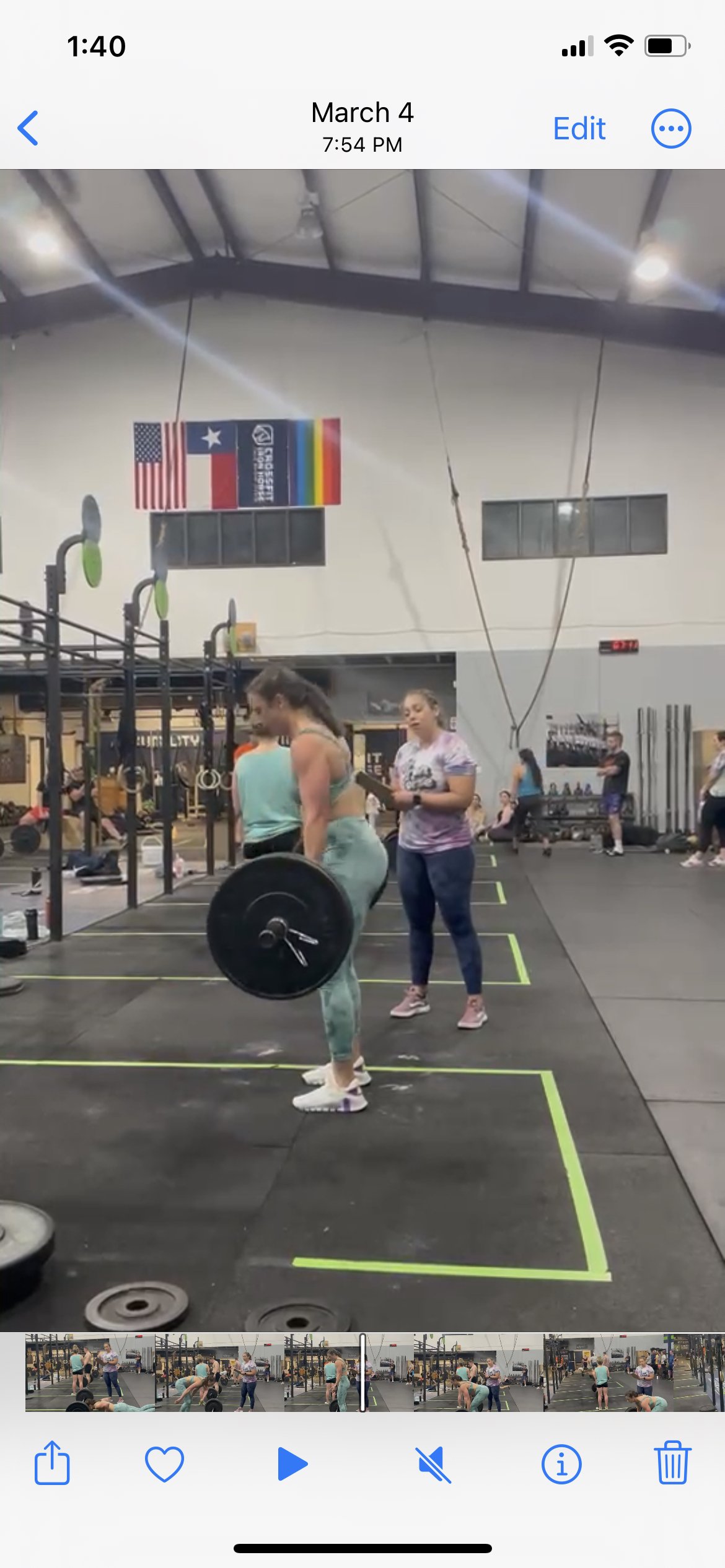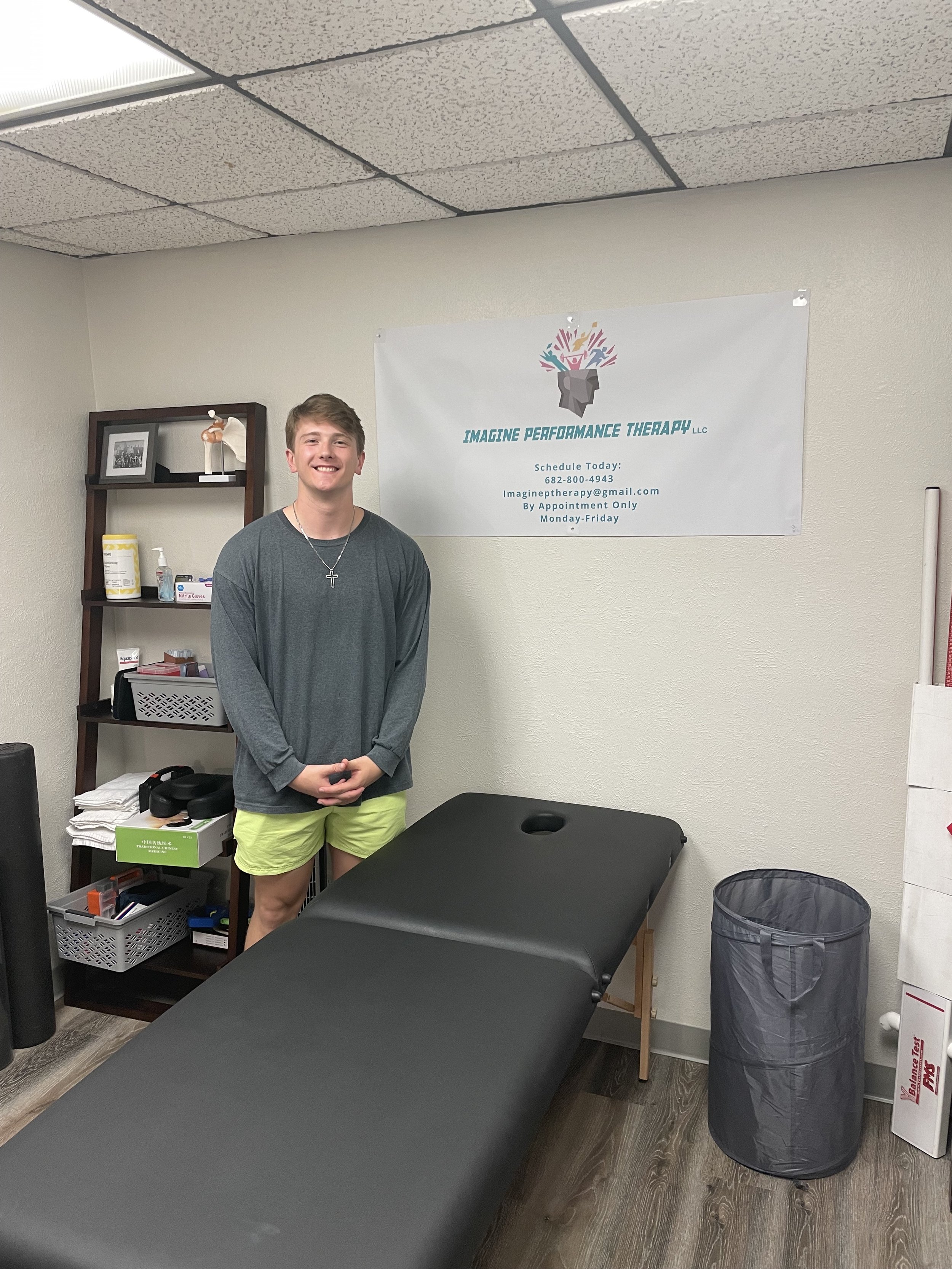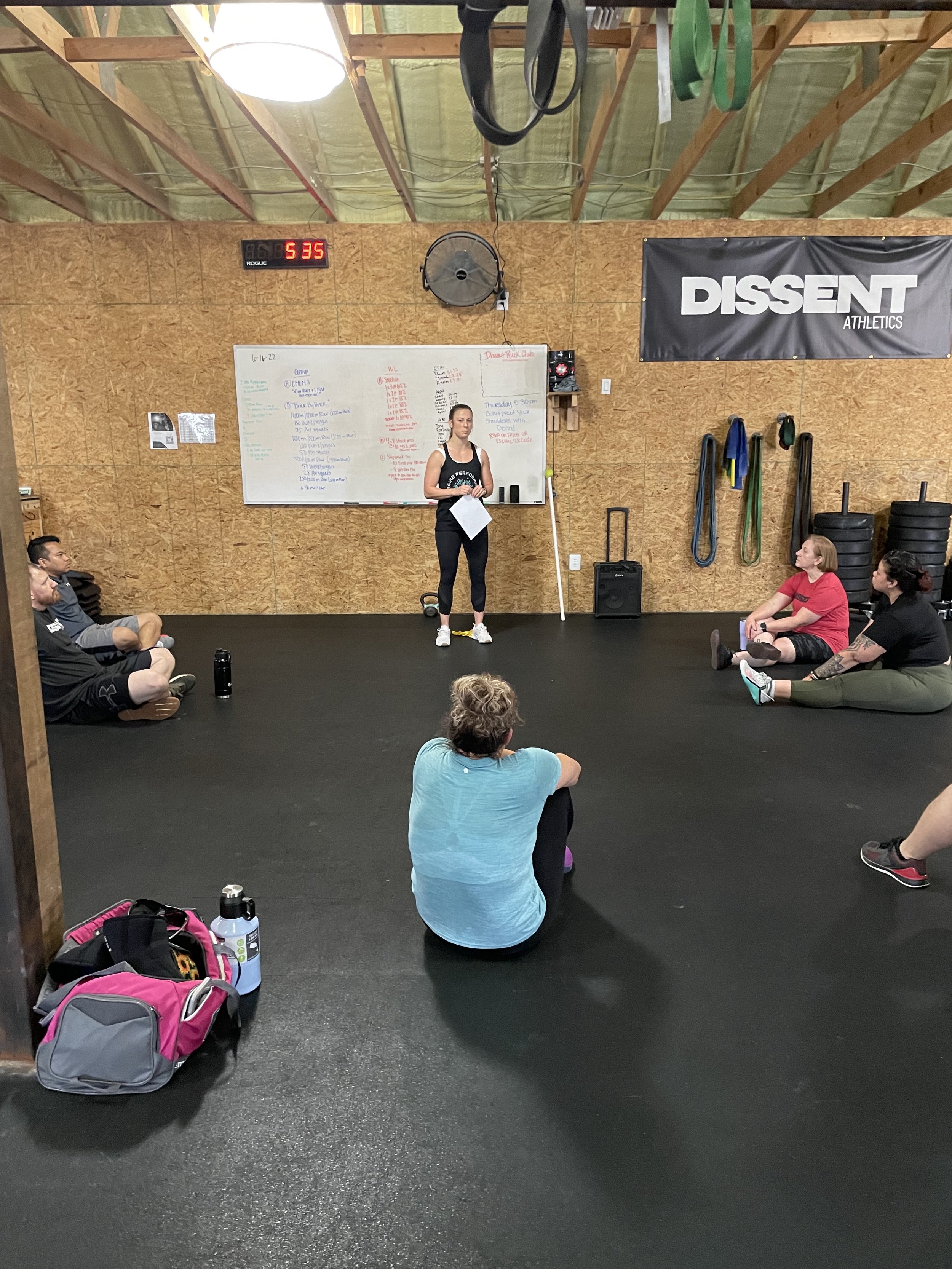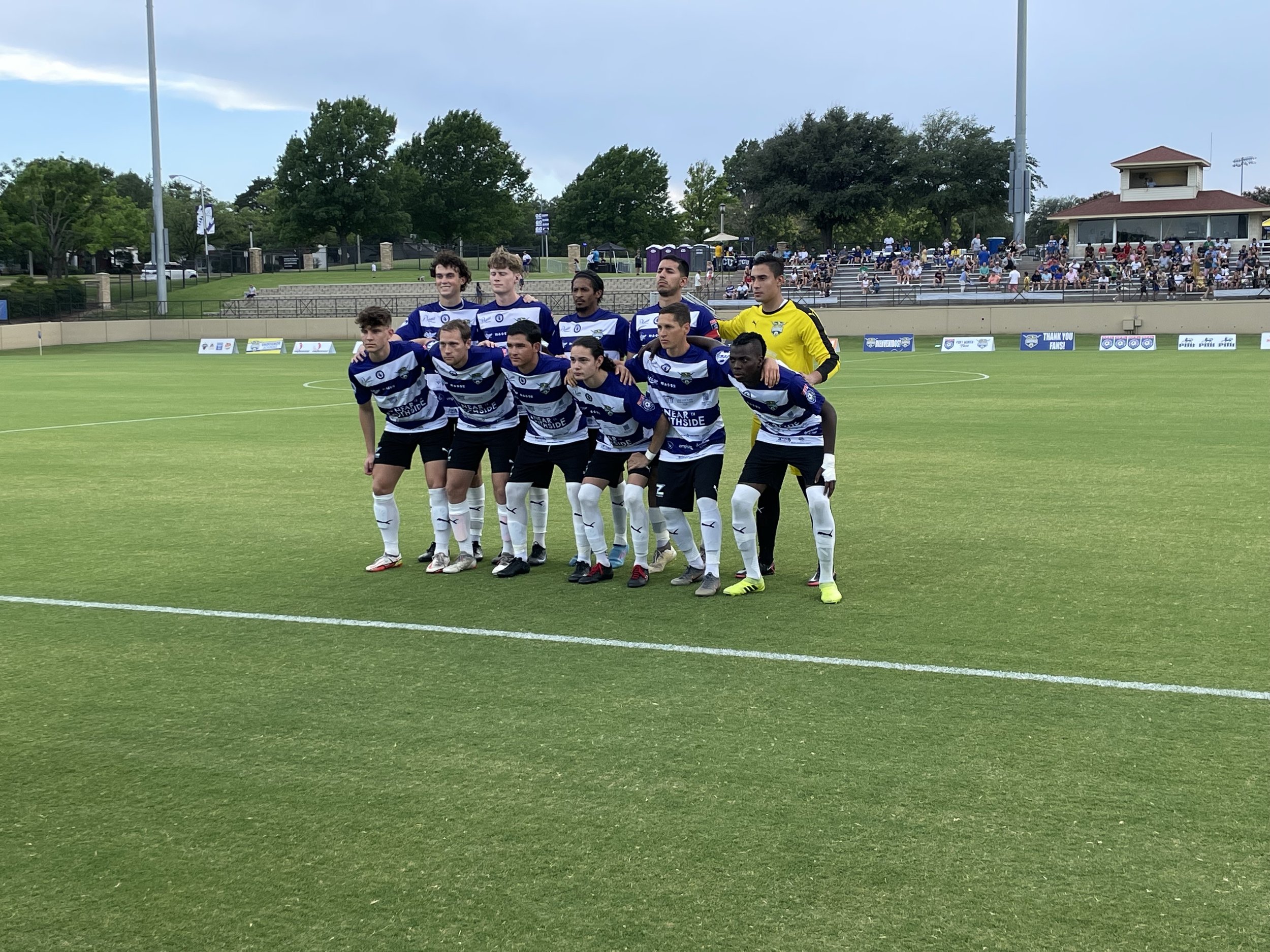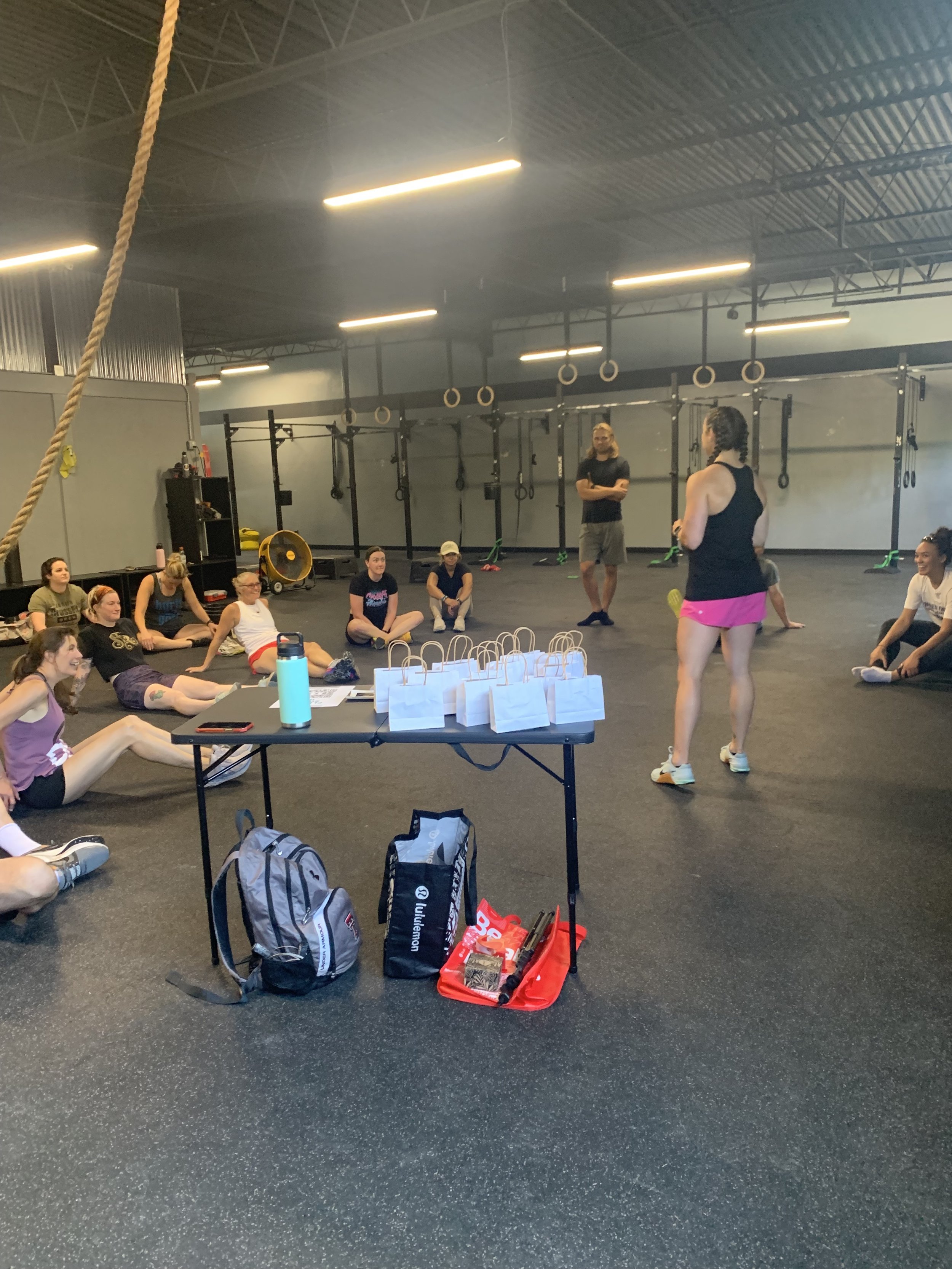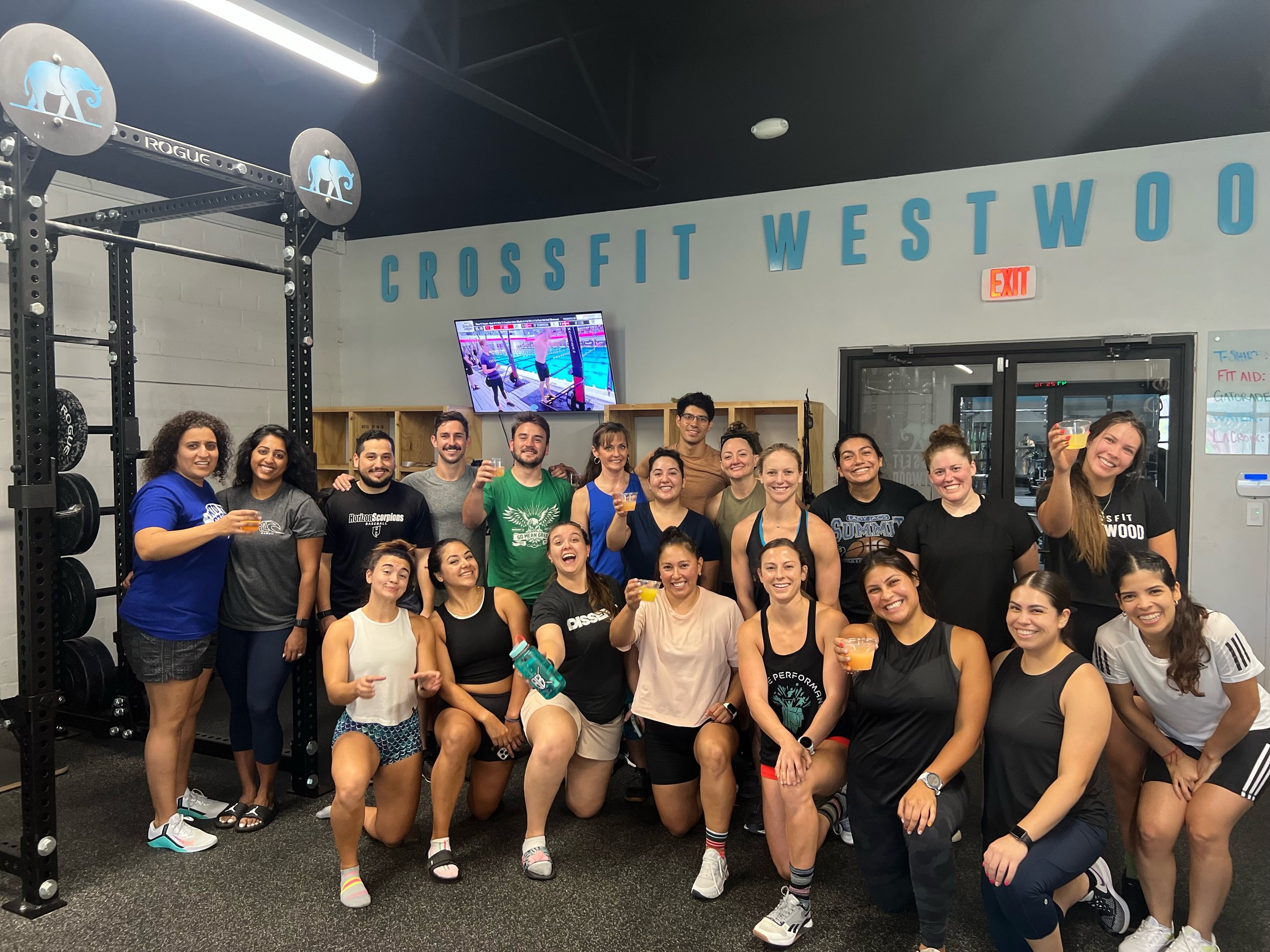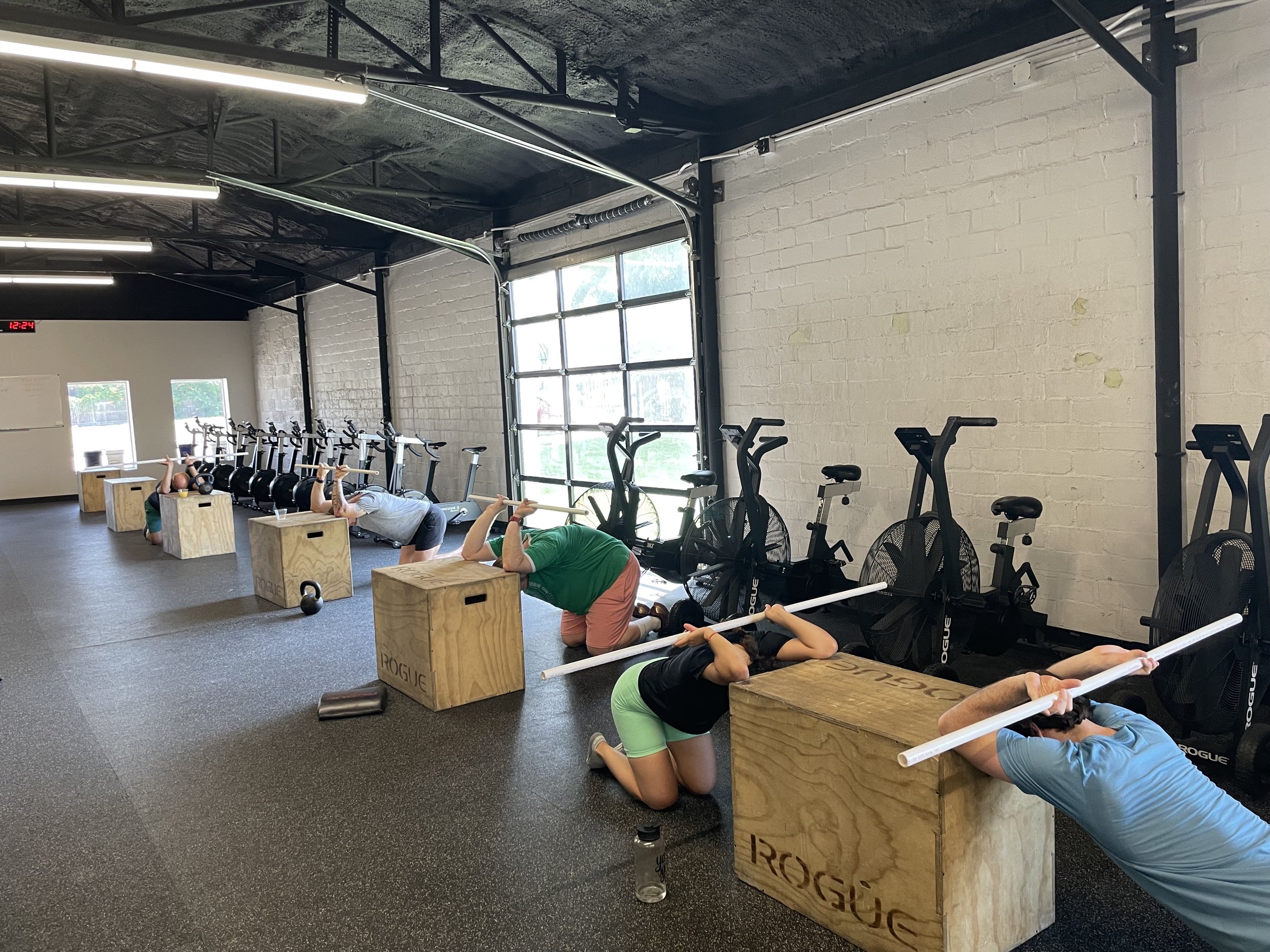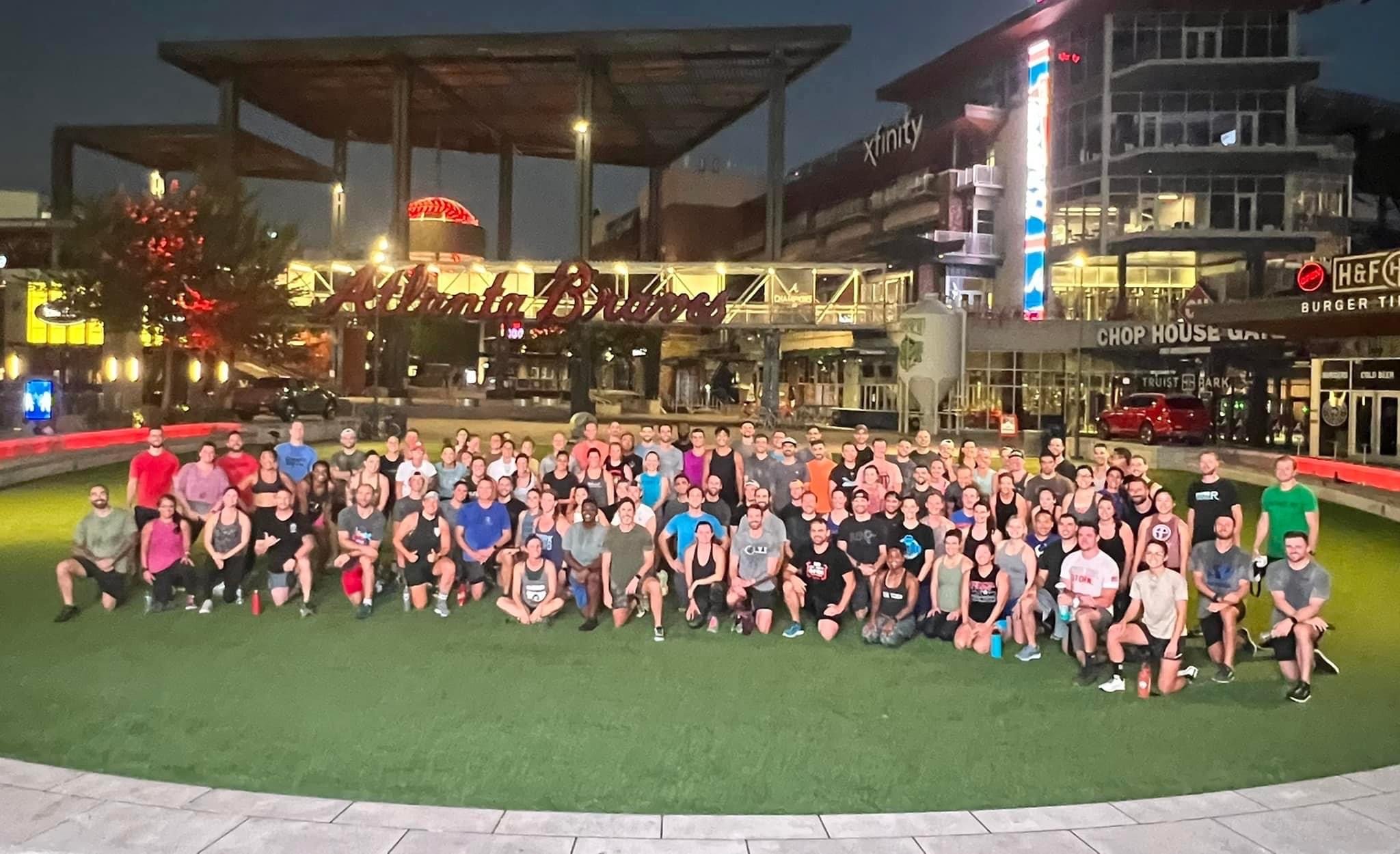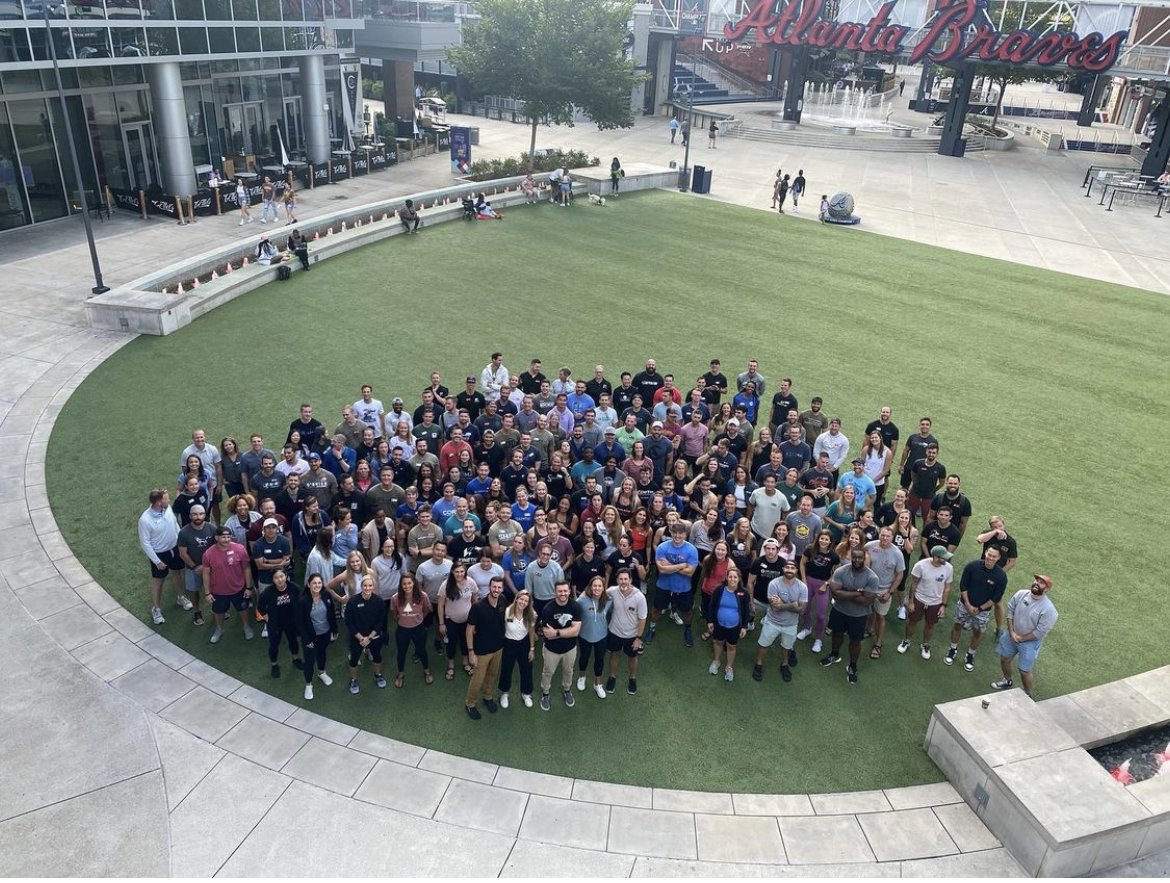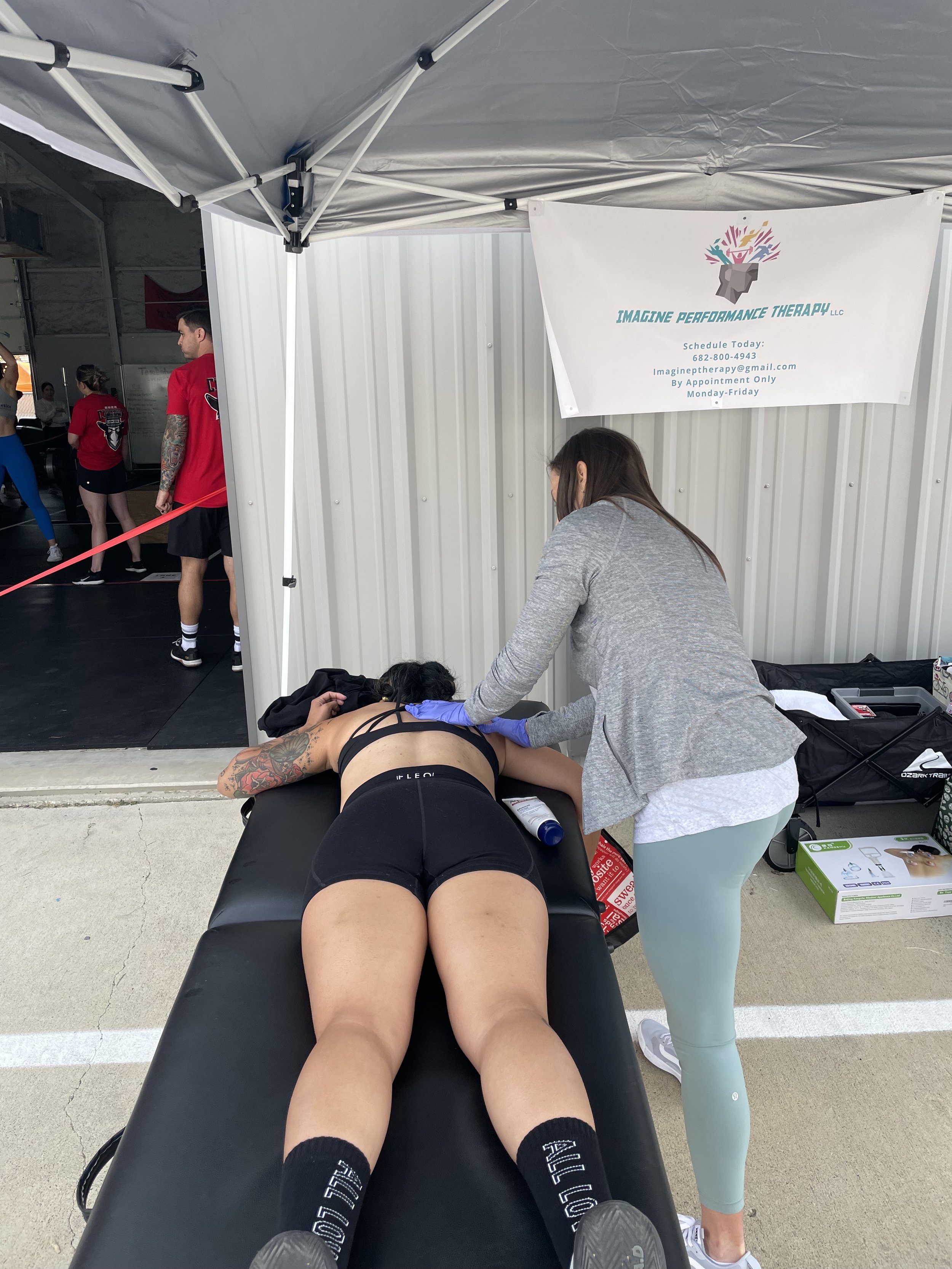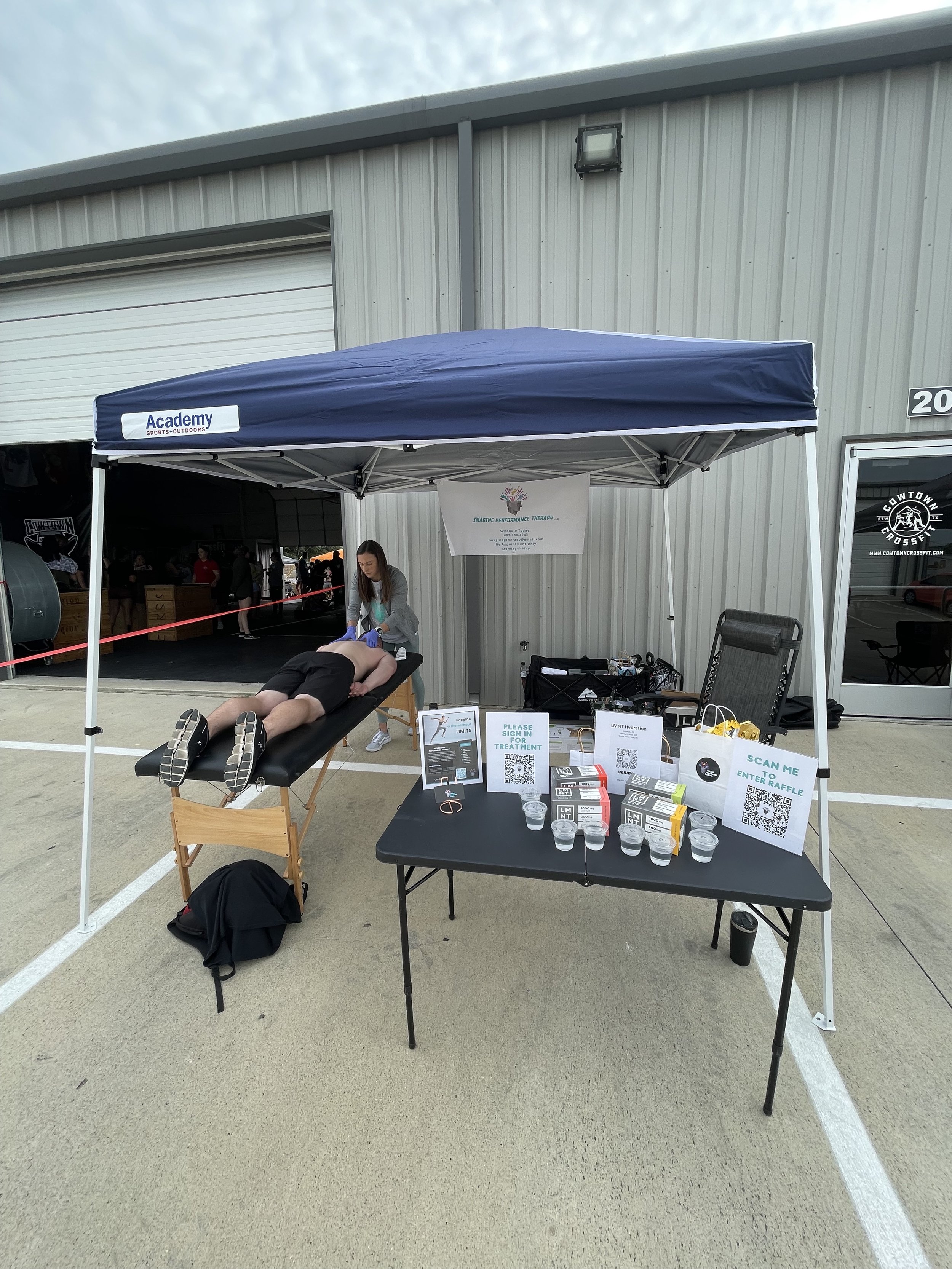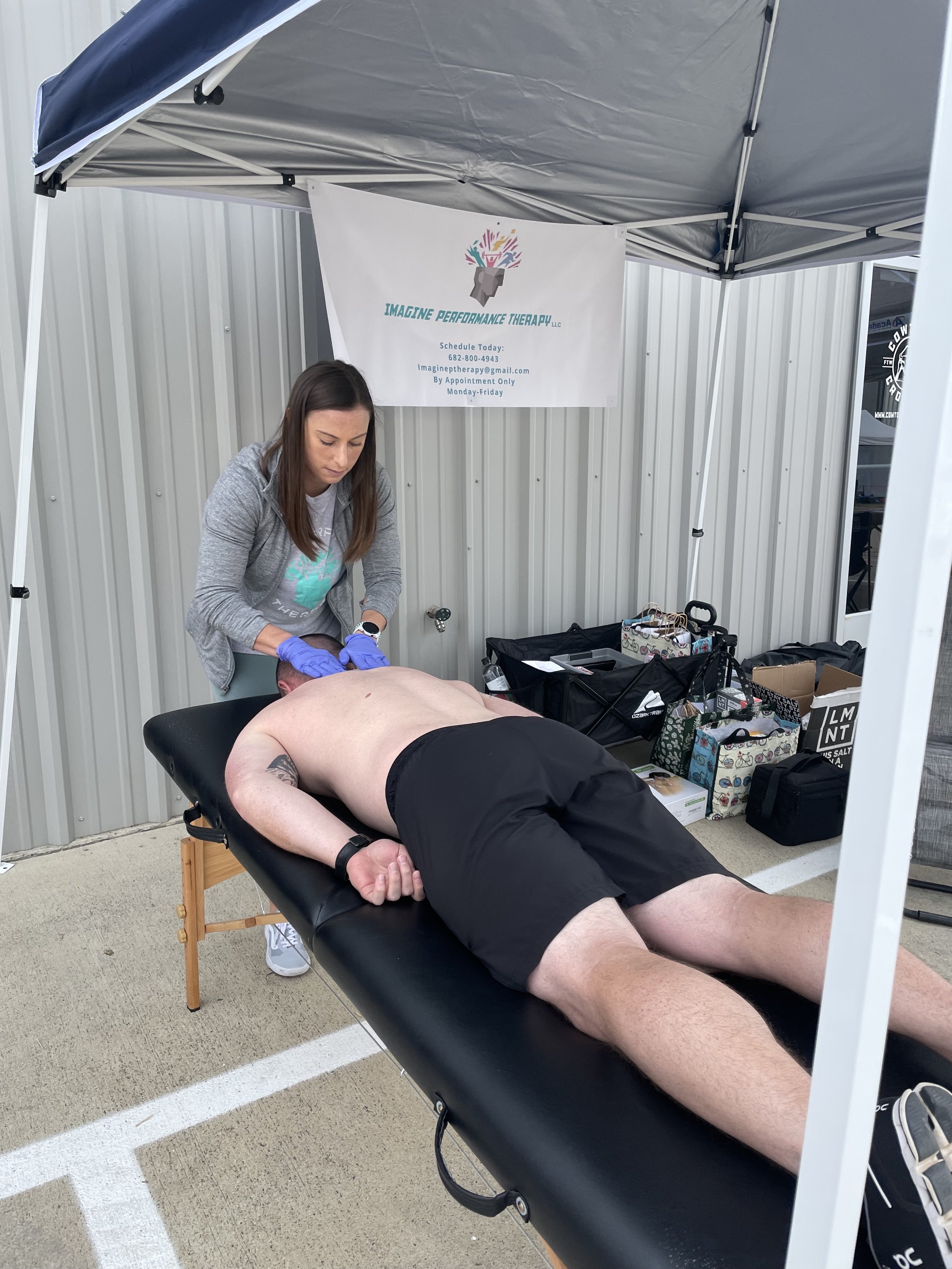Learn How to Run from the Best
We are so excited to announce that Imagine Performance Therapy is hosting a Running Workshop at CrossFit Westwood on Tuesday, May 14th at 5:30 PM.
You will have the opportunity to learn from the best for FREE. Dr. Devin and Dr. Taylor are elite runners with extensive running experience and accolades.
Dr. Devin
Ran Division I College Track and Cross Country Athlete at Texas Tech University, competing in the 800m, 1500m, and Cross Country distances. She was an athlete on the 2011 Big 12 Championship Cross Country Team at Texas Tech and had multiple All Big 12 Finishes in the 800m. She qualified for the NCAA Division I National Meet in 2011 and 2012. She held the 1000m indoor record for Texas Tech for 11 years! She is a current record holder athlete for the 4x800m and Distance Medley Relay for Texas Tech.
After college she has continued to race competitively, completing multiple half marathons and two full marathons! This year she obtained her Boston Qualifying time with a PR of 3:17 at the Austin Marathon.
Best Times: 800m: 2:04 1500m: 4:16 Half: 1:26 Full: 3:17
“Running for me is a competitive outlet, as well as one of my favorite stress relievers!” - Dr. Devin
“The process is not always a straight path. Often there can be twists and turns along the way. Having a solid support system can really help you reach the end goal, let others be a part of the process. It makes the outcome that much sweeter!” - Dr. Devin
Dr. Taylor
Ran cross country in middle school and high school, and won State her senior year. She chose not to run in college because she found herself placing her identity in her performance and knew she would lose her joy for the sport.
Towards the end of college, she ran the Cowtown Half Marathon with her dad and was hooked on distance running! She jumped up to the Marathon and completed her first one at the 2016 Cowtown where she finished third and qualified for the Boston Marathon. Even though she wasn’t sure about the marathon distance after that first race (the marathon is hard!) she knew she had to run Boston. She ran it in 2017, had the time of her life and hasn’t looked back. She joined the Fort Worth Distance Project in 2019 and has the privilege of running alongside incredible, fast women who are chasing big goals. The early mornings, sharing countless miles and conversations with those women has grown her love for the sport and community, shaped her as a person and athlete, and has been such a blessing in reminding her why she runs. She have run a total of 8 marathons and qualified for/raced in the 2020 and 2024 Olympic Trials!
Best Times: 5k: 16:43 Half: 1:16:25 Full: 2:36:07
“I run because I truly love it. The Lord has blessed me with the gift and ability to run, so my goal is to always bring Him glory through it.” - Dr. Taylor
“Over the years, there have been difficult points where I found my identity in running, used it as a control-method, and lost the joy of the sport. With the help and support of numerous people, especially my husband and family, I was continually reminded of my identity in Christ. It took time, but now I run with joy, as a child of God, and with gratefulness for a healthy body that can run.“ - Dr. Taylor
These women are incredibly humble and won’t tell many people of their accomplishments. But it’s truly amazing what they have achieved and what they are continuing to achieve, while focusing on their careers and clients.
This is a once in a lifetime opportunity to learn from two elite female runners who are also Doctors of Physical Therapy, completely free of cost. They have the knowledge, expertise, and experience to educate individuals on how to run properly and efficiently. But they are also trained to analyze the human body, identify faults, and find solutions.
Dr. Devin and Dr. Taylor are beyond passionate about sharing their love for running and their knowledge as DPTs. Bring a friend, a coworker, a family member, bring whoever you think would love this (or need it)!
All skill levels are welcome and encouraged to come. Whether you don’t run, run only when you’re told, or if it’s also your passion, Dr. Devin and Dr. Taylor are ready to help everyone!
The sign up link is in our instagram bio, tap the icon below to head to our page.
We all want to get better yesterday.
I’ve heard it over and over during my career as a sports physical therapist. How fast can you get me better? Or how long is this going to take to resolve? We live in a world where we want things to be instant, however, the reality is we need to adjust our expectations on improving our health and wellness.
Recovering from injury depends on many factors.
First and foremost, the severity of the injury. The more severe, the longer we can expect for our recovery to take. A good example of this is an ankle sprain. A grade one (overstretch of ligaments) can take 2-4 weeks to recover. A grade 3 (full rupture of ligaments) can take 3 months or longer. Knowing the severity of the injury can help set expectations of how fast you can expect to see and feel improvement.
A more complicated scenario is when I see a patient who has dealt with a nagging minor injury that keeps recurring. In my practice, I often see individuals who come to me and say “I’ve always had shoulder issues.” Usually they get to my office because of a new onset of shoulder discomfort but their history is lengthy with multiple bouts of shoulder pain and restriction in activity. They may of even tried PT but been unsuccessful in the past. The more often these bouts of irritation occur, the more frustrating they can be to resolve. What it usually means is that the individual is not ever fully resolving their underlying issue and returning too soon to activity that irritates the cause of their problems. These tiny little fires they keep partially putting out can end up becoming one massive flame if they are not too careful. Rather than only partially putting out the fire, we need to find the source and douse it with the appropriate treatment to avoid the fire spreading.
We have all heard the phrase “you get out of it, what you put into it.”
That phrase holds very true in the world of injury recovery and physical therapy. As your physical therapist I can help with symptom relief and provide you with tools to rebuild and address underlying causes. What I cannot do is put in the work for you. No amount of manual therapy and discussion of exercise is going to substitute for a patient dedicating time to implement the treatment plan we have educated them on. As a patient, if you are not willing to put in the work, you will fail at physical therapy.
When it comes to our bodies, we could all do better to understand that things take time. And if you find those quick fixes, just know that often this does not equal full resolution. Healing is a continuum and there are certain processes in our body we are not in control of speeding up. As your physical therapist, I am here to guide the way! My role is to help promote healing all while progressing you back to your desired activity of choice. This process starts by sitting down and us discussing expectation for recovery on day one!
Similarly, our nutrition journey also takes time and energy in order for us to reach our goals.
Our bodies have been taking in nutrients from before we were born! What our mothers were eating, drinking, what supplements they were taking, their exercise routine, stress levels, and so much more all affect our physiology.
When we are a baby and a fast growing little one, what we were fed is incredibly important!
We might not have control over what we were fed, but it is important to note in the conversation of nutrition changes. People expect their body to change in a matter of months, when your body has been functioning a certain way for (most likely) decades, with ingesting what it considers normal.
When we attempt to change what we eat, it’s never perfect. It’s about changing little habits, making small decisions that add up to larger changes. Even little decisions such as choosing water over tea or soda, asking for a salad instead of fries, picking vegetables instead of mashed potatoes as a side. They all add up if you continue making the hard decisions, one day you will look back and be shocked at your progress in your choice!
When we begin to develop the proper habits that align with our goals, then change will naturally occur.
If we yo-yo diet, expect to eat “healthy” for one week and then go back to eating poorly, nothing will change. Everyone wants change without having to work for it. If you were to drastically change your diet in one day, you would probably hate it, it wouldn’t be sustainable, and you would default back to what is comfortable.
Our bodies were created to adapt. Whatever we feed it, both mentally and physically, it will adapt to it. So, as “boring” as it might seem to focus on the small things, it’s what will bring lasting and sustainable change.
Let us know if this resonates with you, if you need help creating realistic expectations, or if you have a personal story you want to share! Click our email icon or instagram icon below to reach out!
There is a lot to learn over 26.2 miles.
During 2022, I had the opportunity to coach at CrossFit Westwood whom I share a building with. While coaching really was not on my radar at the time, it gave me a way to share my love of fitness and running with others. After giving birth to my son, I had to adjust what all I could handle in terms of job requirements. I stepped back from coaching and stepped into my role as a mom. However, as I returned to work from maternity leave, I felt like something was missing from my day to day. This is where the idea of starting a run club came about.
Running has always been something that I am passionate about. As a child, it provided me with so much joy and energy expenditure. As an adolescent, it gave me comfort and time to escape. And as an adult, it does all these things and more. I decided when getting back to fitness after my son, I wanted a goal. The first idea that popped into my head was getting back to running.
In 2020, I ran my first full marathon. Unfortunately, due to COVID, this was an unorganized event. My actual scheduled race was canceled, twice. Regardless, I stuck to my training plan and I completed the distance. But part of me never really felt like I accomplished this goal.
Flash forward to 2023, newly postpartum, I decided it was time to try again. Only this time, I wanted a team behind me. Thus, the creation of the Imagine Performance Therapy Run Club!
In October of 2023, I launched Imagine Performance Therapy’s Inaugural Run Club. I welcomed runners of all levels but tailored our training plan to completing the half marathon or full marathon distances. For myself, I had two races in mind. I would complete the BMW Dallas half marathon in December of 2023 and the Ascension Seton Hall Austin Full Marathon in February of 2024. Whoever wanted to join me on the ventures was more than welcome!
On our first run club meeting we had over 20 people show up to run! I was so pumped! There is nothing I love more than meeting others who are interested in taking on distance running or just enjoy having a group to train with! October was a great month of training together, we had so many people consistently show up and many experience their first long run over a 30 minute duration!
As we settled into Texas “fall” numbers dwindled some. Unfortunately, this is where I often see people shy away from training for a road race. Inconsistent weather in Texas can often make it less than enjoyable to wake up at 5AM to hit the pavement. But a good group of us stayed the course. The Saturday long runs soon became my favorite runs of the week. Even with many of us running different paces, it was so fun to start and reconnect with the group post run. Accountability does wonders for staying on track with a training plan. This is something I preach to my patients daily!
As December approached, a group of us were gearing up to run the BMW Dallas Half Marathon. I, myself, felt pretty prepared, however, I was definitely under recovered. Anyone else ever trained for a half marathon in the thick of a sleep regression with your 6-7 month old? Probably not my brightest idea! But come race day I was pleasantly surprised but what my body could handle. I went out there and I maintained a pace faster than I intended and walked away feeling great. However, that was not the best part. The best part was the other runners who thanked me for showing them what a structured training plan could do for their running. Multiple runners were able to negative split their half marathon and hit new personal bests! This is where my love for coaching really returned.
Following the BMW Dallas Half Marathon, it was time to shift gears and begin prep for the Austin Full Marathon, while also providing tailored training to those running the Cowtown Half and Full Marathons at the end of February. For a handful of runners in our group, Cowtown would end up being their first official half marathon. For myself and one other, the Austin Marathon would be our first official full marathon! The excitement was brewing!
Since October, I had been creating the training plan to lead everyone to these end goals. To say I had no doubt about my programming would be a lie. I have always had a degree of imposter syndrome. I really wanted to see my training plan not only allow individuals to finish the race, but hit the goal times that they were shooting for! I continued to tweak and modify the plan as we settled into the holiday season and embarked on the new year.
With the start of 2024, our group had definitely become quite a bit smaller. I tried to not get too in my head about the number of people attending our runs, and focused on the individuals who continued to show up and express their enjoyment of the run club and programming. We had just 6 weeks until the Austin races and 7 weeks until Cowtown. This is the part of any marathoner’s training that can get quite lonely. But not this time, this time we had a small but mighty group to support each other on some of the most grueling training runs yet.
Now here is where things got a little frustrating for me. At the end of January, I had what felt like some peroneal tendonitis pop up. So far throughout the training, I had avoided any form of overuse injury. I felt like I had done a great job of listening to my body and modifying training outside of my runs appropriately. However, the overuse bug got me regardless. Even PTs can miss some warning signs. I did what I could on my own as a PT for symptom management and rehab, I even skipped a few runs. But, symptoms were not going away. I was fearful of the worst, a stress fracture. I reached out to an orthopedic friend of mine and had him take a look. I needed to know just how much harder I could push my body, or if I had truly missed some big warning signs. The good news was, there was no evidence of fracture on X-ray. The bad news was, I had all the hallmark signs of a stress reaction (the beginning of a potential stress fracture). So I did what I really had hoped would not have to happen. I completely bailed on my run club for a full week.
As the leader of the group, missing a group run or two is a part of life. Completely bailing for a full week made me feel like a bad leader and coach. However, the group I had been running with was in full support! They gave me words of encouragement and told me that hoped for the best outcome and that I would still make it to race day. Flash forward to a week out from race day. I was back in business! My foot was not 100% but I no longer had pain with walking and the swelling was completely gone. With just 3 days till race day, I was able to get one final training run in with two of my most dedicated running buddies!
And now, it was time to head to Austin. When my husband, son and I arrived in Austin for packet pick up, the nerves started to settle in. Was I prepared? Was my training plan enough? Would my son sleep at our Airbnb? Would my foot make me drop out of the race before 26.2 miles? There were so many doubts that crossed my mind, however then I remembered that I had already accomplished so much leading up to race day. First, I started a run club. I gave free access to fitness to the Fort Worth community for 5 months! Second, I stuck with the plan. I trained religiously for 5 months along side many others. Third, I trained and ran for a bigger purpose. I had raised over $1,000 for the American Foundation for Suicide Prevention. I was making an impact, even if it was just a small one on another community of individuals.
Race day arrived and I woke up with so much excitement! I had a great night sleep, I felt so much energy already flowing, and I was more than ready to hit the pavement for a few uninterrupted hours of running! As I joined the crowd at the start line, I could feel my adrenaline settling in. I was ready to go! And with the pop of the gun, we were off! I could not of asked for better weather. It was in the 30’s at the start but the temperature stayed below 50 for the entire race. This allowed me to stay cool and kept my hydration on point. My original plan starting out was to stick with the 3:25 finish pace group. However, I quickly realized that I had a faster pace in me. Before I knew it, we were through mile 8 and I was running under 7:30/mile pace, and I felt strong.
During the race, I kept telling myself to focus on what I could control. My nutrition, my hydration, my stride and my pace. I tried to avoid thinking about all the hills, the separation between me and the next runner, and where the heck I was in relation to the finish line. Along, the race course, I encountered multiple other runners that stayed in close proximity to each other for the last half of the race. It was very motivating to have someone pushing just as hard as you were, smiling and enjoying the process along the way. Another thing that kept me going was the crowd. This was something I did not have in 2020. In 2020, it was me, my husband and a single friend to guide the last 10 miles of the run. The Austin Marathon provided so much support from mile 1 to mile 26.2 with a crowd constantly reaching out for high fives, holding up funny signs and shouting words of encouragement. Definitely made me think twice about stopping and walking. Which I did not do!
When I decided to sign up for Austin, I had many people tell me that it was a really tough course and lots of hills. I knew this coming in. I can tell you now, this was definitely true. The first 5k was a steady uphill climb, with mile 8, 12, 19 and finally mile 26 being some very steep hills to climb! As I hit mile 26, this was the only point in the race that I felt like I might need to walk. But this was also the point of the race where I knew both my husband and son were standing there waiting for me to sprint to the finish, so that is exactly what I did! I came blazing across the line in 3 hours and 17 minutes. I had successfully held a sub 7:30/mile pace for the entire 26.2. Something that one of my run club buddies had told me he though I was capable of. I heard his voice many times throughout the race as I checked my pace on my watch.
After I crossed the finish line in Austin, although completely exhausted, I was so invigorated by the success of the race. I knew I did not do this alone. So, I sent a message to the run club thanking each and every one of them for being a part of my journey.
Training for a marathon can tell you a lot about yourself. For me, this marathon helped me understand just how important my community is. From patients, to run club members, to my friends and of course my family, I had so many people showing me support. Yes, a few told me I was crazy, but still told me that I could do it! Marathon training is not starkly different from how it feels to recover from an injury. As much as we want to road to be easy, with no hiccups or accidents. The process is not always a straight path. Often there can be twists and turns along the way. Having a solid support system can really help you reach the end goal. Whether that is returning to exercise from an injury, trying out a new form of exercise for the first time or completing your first marathon, let others be a part of the process. It makes the outcome that much sweeter!
Come Check Out What’s New
January has been such an awesome month to kick off the new year! We have exciting things going on here at Imagine Performance Therapy and are eager to share them with you all.
Marathon Training for a Bigger Purpose
Dr. Devin has been training for the Austin Marathon (February 18th) with her run club and has been loving it! It has been a lot of intense and demanding miles due to the cold, the rain, the ice, and early mornings. She has always been a disciplined athlete and is incredibly dedicated to the goals she sets. It’s an inspiration to everyone around her and keep scrolling to see who she partnered with this year for fundraising!
Dr. Devin partnered with Austin Marathon Gives!
She has a deeper “why” for this marathon as she is fundraising for the American Foundation for Suicide Prevention. Running this marathon is more than just running a race. It’s about those areas in our hearts and lives where no words can sum up how we feel, but we know that we need to keep going for others. We have no idea how our lives will impact others, all we know is that we can and will impact those around us. Whether we know them or not, we know that every life is precious and we want to help those who feel like they have to fight their battles alone.
New Layout!
Dr. Devin has completely changed the layout of the office! She continues to maximize and elevate this space to create the best environment for our clients.
New Table!
We added another table that can adjust to multiple different positions allowing for maximum comfort and treatment.
New Corrective Exercise Set Up!
We have a full squat rack, resistance bands, dumbbells, and other weights that allows Dr. Devin to do more with her clients in the privacy of their own space.
Lastly, as coffee fanatics, we have a coffee machine and a mini fridge with water for clients and guests. As well as we are still providing LMNT boxes, sample packs, and we provide singles if you come in and just need one for the day!
Upcoming IPT Events!
With the CrossFit Games Open around the corner as well as the Cowtown Marathon races, Dr. Devin is hosting FREE 15 minute movement screens for CrossFit Westwood members on Saturday, February 10th from 8-11am. This is an amazing opportunity for any and all members to be seen by Dr. Devin for any nagging pains that are going on and to walk away with a game plan for steps to improvement. It’s also a chance to come check out the office and meet the team if you never have before!
If you are interested in giving for the fundraiser, you want to sign up for the free movement assessments, or want to reach out for any questions - click the instagram icon below and head to our bio!
And the 2023 season has come to an end…
2023 was by far one of the most challenging and rewarding years of my life. Going on 2 years of business, there was so much growth that took place during 2023. Starting in January of 2023, I hired IPT’s first employee. I really knocked it out of the park with bringing Megan on to the team. Megan has helped keep daily tasks organized, relieved so much stress for me and built a great following on our social media! Megan was able to pursue and obtain her nutrition coaching certification and work a couple other part time jobs, all while making sure she delivered for IPT. I am so fortunate to have Megan as a team member and I cannot wait to see what the future has in store for the both of us!
February and March flew by while trying to get prepped for the arrival of my son, Riggs. I was able to bring on a part-time PT to help cover the 8 weeks I was out after having my son. Taylor stepped up to the plate after just a few weeks when my little guy decided he needed to make his grand entrance a couple of weeks early! Taylor was able to bring in some new clients and help serve current clients so that they did not have to put a pause on their progress! They say it takes a village to raise a child, and I am so thankful that I had both Megan and Taylor in my village during this pivotal time in my life!
As you can guess, April was a BIG month for me. The early arrival of my first baby happened early on Easter Sunday. My husband and I were pleasantly surprised by Riggs’ impatience and instantly fell in love. While I felt stressed and not quite prepared, having baby Riggs placed on my chest made all those feelings disappear. Throughout April and May, I was behind the scenes of IPT. I did some remote work for previous and current clients, helped keep our social medial fresh and tried to do some planning for my return in June. I learned the challenges of working with a newborn. There was LOTS of starting and stopping in the middle of tasks or trying to quickly get things done while my little guy slept. I cannot thank all of our patients for the grace they showed me with learning to balance motherhood and business ownership.
As temperatures rose and summer settled in, I returned to the office to see clients in person. To kick off my return, IPT hosted a Free Injury Screening Session for the members of CrossFit Westwood. The event was a huge success! Taylor and I were able to screen several members and help many of these finally address issues they had been ignoring for quite some time!
Throughout the summer, I continued to learn the challenges of being a new working mom. Sleepless nights, quick pumping sessions between patients, trying to fit in a quick workout while at work in order to be full time mom when I returned home. And that is just to name a few challenges I faced. I am fortunate enough to have a supportive spouse and a saint of a mother to help care for my little guy while I was away at work. No one can fully warn you about both the physical and emotional toll that returning to work postpartum can have.
By fall I felt like I was back in the grove at work. My schedule was steady at the office and I was learning how to manage being time poor at home. Not every day was easy but I was learning how to stay flexible as a working mom. In September, I had the opportunity to set up free injury screens at RevFit in Fort Worth. This was just the beginning of a new relationship between IPT and RevFit! RevFit is a great group fitness gym that offers amazing workouts, supportive community and a fun atmosphere!
As October arrived, so did IPT’s Run Club! As if I wasn’t already time poor, I decided it was time to share my passion for running with others! Our first workout of the IPT run club included over 20 individuals coming out to time trial a 5k! I was so excited for the turn out and grateful to be training with others for my most recent half marathon!
November was busy with personal life events. I took quite a few days off in November to travel with friends and family. Baby Riggs got to go on his first airplane to see his Aunt Kinsey play her last senior year home volleyball game in South Carolina. I greatly appreciate all my patient’s understanding during this busy travel month!
And finally, here we are in December. IPT launched it’s second annual Open Enrollment! On the first day we had 7 people contact us to secure their spot out of the 10 we offered. We were so ecstatic that we decided to add 2 more spots! I was so pumped to have 12 former clients want to come back and work with me on a long term basis!
2023 was quite the blur! There is so much to be thankful and grateful for! Running a business and having a baby are not for the faint of heart. There were quite a few challenging days in 2023 with learning to balance motherhood with my career. However, the most rewarding thing I did every day was come home to my son and show him how passionate I am about what I do. That meant pulling late nights after he went to sleep to make sure my clients had what they needed from me, as well as early mornings catching up on computer work while I rocked my little guy back to sleep. If there is one thing he will know about his mama, it’s that she is a hard worker!
I hope you and your family had an amazing 2023, and I wish you many more blessings in 2024!
A Guide for Holiday Eating
Happy Holidays y’all! It truly is the most wonderful time of the year and we hope that you get to spend time with loved ones and share some joy.
We know that holidays can also be hard for various reasons, one being the food!
Do you struggle with binge eating sweets or food, where you just have to eat everything? Or do you struggle letting yourself eat any of the sweets or other foods?
Good news, you’re not alone! Here is a guide to help you navigate the holidays when it comes to nutrition.
First, let’s talk about what typically happens when people struggle with nutrition around the holidays…the “all or nothing” mindset.
Zero restrictions/care
This is the “all” portion, where people pay no attention to what they are eating, almost losing touch with themselves in the process.
Common outcomes are eating until you feel sick, eating in such excess that weight gain does occur, or eating so many foods you don’t normally eat that you feel guilty, sluggish, and just not good.
Total restriction
This is the “nothing” portion, where such strict guidelines are put on nutrition. No sweets, no "unhealthy” foods, no alcohol, nothing out of the ordinary.
Common outcomes are people questioning you, most likely thinking about what you want to eat, and probably not fully enjoying the present moment.
The all or nothing mindset is not always the best option. However, there are specific instances where it might not be as harmful for someone to pick either of the options. Those instances being: you have a competition or performance coming up close after the holidays are over where you need to be very aware of what you put in your body. The other side, you just had a competition or performance and you need time off of worrying about what you are putting into your body.
Now that we covered the polar opposites that are also presented to you on social media by fear-mongering…
Let’s talk about what you can do to navigate holiday eating!
Be mindful and aware
Pay attention to what you are eating! All the appetizers, the self-serving dinners, the desserts, the alcohol. Holidays are celebrations, and feasts usually surround celebrations. We normally don’t know what everyone is bringing, and we naturally want to try everything. Which is great if we are mindful of what we are eating! If we aren’t, we might go overboard and not feel so great afterwards.
Have a plan
While these celebrations and feasts usually last all day or night, do your best to plan what you eat and when you eat.
What we mean by that is still have a balanced plate for meals, and try to spread out the snacks or other appetizers.
Balanced plate: prioritizing protein, plenty of veggies, and some carbohydrates (that do taste the best around holidays). What about fats??? More than likely, the cooking of the meals has covered that fat intake for you!
Desserts!
Here lies the trickiest part! Allow yourself to have a dessert and to enjoy it without eating all of the desserts. My best advice is to only eat dessert on the actual celebration days. (i.e. Christmas day, Thanksgiving day, new years eve, etc). Usually there are leftovers or mom is making various different desserts, but try to stay away from them until the day comes! This allows us to enjoy the sweets while still having boundaries so we don’t go overboard.
Alcohol
As always, please be safe if you are drinking! Holidays come with a lot of cheer, but we still need to be cautious when it comes to alcohol.
Try to pair your beverage with a glass of water, going back and forth between the two. Staying hydrated is incredibly important during the holiday season!
The truth about nutrition during the holidays comes down to one thing…
Make the best choice you can, where you are, with what you have.
You don’t have to be perfect! Be present, enjoy the season, and give yourself grace and pep talks along the way.
While this wasn’t a “step by step” or an “exact how to” guide (because those rarely work when it comes to nutrition), we hope that this helps you navigate the holidays and be more aware of your nutrition!
Nobody wants runner ankles…
Ankle pain with running is very common. The more we pound the concrete, the more likely we are to have some nagging pain pop up. However, running related ankle pain, does not tend to get the fast track treatment that “runners knee” or “IT Band syndrome” gets.
With every stride a runner takes, the ankle absorbs a high amount of load. Depending on a runners form, that load can be smaller if the hip and knee are doing a good job, or it can be an overload amount if we see break down at other joints. There are 29 muscles that contribute to movement of the foot and ankle, while there is a plentiful number of muscles, these muscles are small and get get overworked fast!
As a sports physical therapist, I often see runners who have ignored minor foot or ankle pain until the point that they can no longer walk without pain. This sets the runner up for a longer road to recovery, or the risk of an underlying stress fracture that can sideline a runner for quite some time. This is why this months blog post is dedicated to common foot/ankle issues in runners and some quick and easy things you can do to help keep your feet and ankles strong!
Common Foot and Ankle Injuries:
Calf Strain/Achilles Tendonitis: The gastrocnemius and the soleus make up our “calf complex.” These muscles are the biggest and most powerful of the muscles that connect to the foot and ankle. Often we see calf strains occurs with a quick ramp up of speed work or plyometric training. To avoid this, runners should consult a physical therapist or strength and conditioning specialist to help them with speed and power based training. Both speed and power training are beneficial for runners but how quickly we add them in or increase the intensity can make the difference between injury and performance!
Peroneal Tendonitis: Your Peroneal muscles are on the outside of your lower leg and attach to the outside of your foot. They are an ankle stabilizer and perform the action of ankle/foot eversion. These muscles and their tendons can be injured due to an acute ankle sprain but can also develop tendon irritation in runners who have high arches. Peroneal Tendonitis usually causes outside ankle and foot pain, as well as stiffness in the lateral portion of your lower leg. Typically, pain associated gets worse with weight bearing activities.
Posterior Tibial Tendonitis: The main role of the Posterior Tibial muscle is to support the arch of the foot with weight bearing. This muscle also assists with both plantar flexion (pointing your foot down) and inversion (pointing your toes inward). This muscles gets a lot of stress with running to support the arch as the foot contacts the ground. Runners will typically experience pain along the inside of the ankle and down into the foot, especially with weight bearing or activity. If ignored, this can cause arch collapse if the tendon fully ruptures.
Shin Splits: Also known as medial tibial stress syndrome. Pain along the anterior shin is caused by micro tears in the muscles that attach along the medial aspect of your tibia. This syndrome is typically caused by a rapid increase in intensity of activity (i.e. runners ramping up too quickly on mileage or speed). If ignored, this injury can lead to a stress reaction on the bone and could ultimately culminate into a stress fracture.
Plantar Fasciitis: Caused by inflammation of the plantar fascia. Typically occurs due to a sudden increase in activity, chronic overuse or certain foot types are prone to developing plantar fasciitis. Most commonly, pain increases gradually and is most prominent near the heel of the foot. Although condition is caused by overuse or increase in stress, pain typically tends to be at its worst first thing in the morning or after inactivity.
What should you do if you think you have one of these conditions?
1) First and foremost, stay active. Modify your activity to a non-painful amount of load (for all you runners, think biking or swimming as an alternative to running).
2) Assess your training volume. Did you recently add in speed work? Did you recently bump up your mileage quite a bit? If you answered yes to either of these questions, let’s modify by pulling back a bit and seeing if pain resolves.
3) Get a running assessment done. The way you absorb load when running can cause unnecessary stress on your foot and ankle if there is form breakdown above this area. At Imagine Performance Therapy, we perform running gait assessments often to help keep our runners training at the volume and intensity they prefer!
4) Take care of your ankles and feet before there is a problem. Below are some of our favorite foot and ankle exercises to add into your strength training! And if you are not strength training as a runner, you definitely should be!
Runner Foot/Ankle Health Exercises:
A) Toe Yoga: Set 1:00 clock; alternate lifting big toe and little toes. Rest for 30 seconds. Perform 3-4 sets.
B) Banded Side Steps with band at arch: Take 12-15 steps one direction, followed by 12-15 steps the opposite direction. Rest 30-60 seconds; perform 3-4 sets.
C) Single Leg Balance with 3 Direction Reach: Reach each direction 5 times, switch and perform on opposite side. Rest 60 seconds between sets. Perform 3-4 sets.
D) Eccentric Heel Raises: Use 4-6 inch step; raise up with 2 legs, lower down on 1; slow and controlled. Perform 8-12 reps per leg. Rest 60 seconds between sets. Perform 3-4 sets.
E) Single Leg RDL: Standing on one leg, hinge forward at your hips. Maintain contact with ground on your big toe, little toe and heel. Assume standing. Perform 8-12 reps, repeat on opposite side. Rest 60 seconds between sets.
If you are struggling with foot and ankle pain and cannot get it under control. Reach out to us today! Let us help you find the root cause and build you a program to get you back to pain free running! Click HERE to set up your FREE discovery call!
Coming this Fall: New Programs at IPT
How did we already get into the last 3 months of 2023? This year has flown by and has been full of new experiences and growth! Knowing that we just have 3 short months left before we are into a new year, IPT has some new programs to share with the community!
Dr. Devin recently decided to go back to her long distance running roots by training for a half marathon and then on to a full marathon. She has gone through many seasons of fitness but always seems to circle back to running, her favorite form of exercise.
With her experience as a college cross country athlete, a fitness coach and a physical therapist, she decided this time around, she wanted to share the training experience with a community. Thus began the idea of starting a run club.
Starting October 3rd, Dr. Devin will be leading a run club in collaboration with CrossFit Westwood! The run club will meet 3 times per week and Dr. Devin will be running along side other club members.
In the past, Dr. Devin has written half marathon programming for former patients and has written a full marathon training program for herself. One thing she identified over the years from patients and her experience is that there is more to marathon training than just running.
Dr. Devin has created a training plan that she will be sharing with the members of the run club that includes running, strength, power and mobility training. The goal of this well rounded program is to help runners see the benefit of performing specific strengthening to improve their running and decrease their injury risk!
If you are interested in learning more about our run club, click HERE and sign up for our emails!
Introducing…. Conger Nutrition Coaching!
Megan has been studying most of this year for her Nutrition Certification that she completed in August. Conger Nutrition Coaching was created to help encourage and equip individuals to live a healthy and fulfilled life through their nutrition journey.
Conger Nutrition Coaching offers personalized, one-on-one nutrition coaching by Megan. Whether you are a beginner in the nutrition world and want to learn how to eat healthier to feel better, an athlete who needs to dial in their macros, a gym-goer who wants to change their body composition (whether that is leaning out or bulking up), or if you are someone who struggles with their nutrition at a deeper level, Megan is ready to help you achieve your goals.
Food is such a huge part of our lives and too often it goes overlooked. But, what we eat has the power to change our lives, how we feel, how we look, and how our body functions. Megan is on a mission to help individuals thrive through Conger Nutrition Coaching.
Email m.conger@tcu.edu for more information or inquires.
Summer Recap
Summer has officially ended (although looks like the heat is here to stay). With the fall months settling in, we want to take this months blog post to reflect on things we did this summer and preview some upcoming fall events and services that are coming to Imagine Performance Therapy!
Dr. Devin’s Summer Recap:
For me, these summer months have been a whirlwind. Following my return from maternity leave, I hit the ground running. My goal with my return to the clinic was to catch up with my patients and open up access for new clients, all while navigating motherhood!
In June, prior to my return, Dr. Taylor and I hosted a “Meet the Doc” event at CrossFit Westwood, This allowed the members at CrossFit Westwood to get a free taste of what we are all about! This event was a huge success and helped many members at CrossFit Westwood get the help they needed to keep them active in the gym! I also got the opportunity to meet patrons of Perspire Sauna Studio, with another “Meet the Doc” event. Perspire is a state of the art sauna studio in Fort Worth that offers great recovery benefits for athletes! I have enjoyed getting to hit the sauna for relaxation and recovery myself!
As quick as June started, it was just as soon over. In July, I got to catch up with my friends at Dissent Athletics by hosting a Running Workshop. We discussed common running injuries, running form and did a quick running specific strength training session. With my background as a collegiate track and field athlete, working with runners both competitive and recreational is one of my favorite type of athletes to treat! During July, we also got to set up a recovery table at Dissent Athletics in-house Summer Ramble Gamble competition. It is always a good time to watch people get out of their comfort zone and compete!
But enough about the work side of the summer, on the personal side this summer served as a season of needing to be flexible. And I am not talking about needing to stretch. For me, my journey into motherhood while being a solo entrepreneur has been both rewarding and very challenging, A big reason I branched off on my own and started Imagine Performance Therapy was so that I could be in control of my schedule and be present for my family. Much of June and July were spent learning to give myself some grace. Not everyday back in the office was easy. Many days I was very sleep deprived, felt constantly behind on tasks and just plain overwhelmed. What I can say, is I am blessed with patients who have given me grace with this life adjustment, a fantastic admin, Megan, who had helped keep things organized, a great PRN therapist, Dr. Taylor who was available for clients while I was out, and of course an amazing family support system.
As a sports physical therapist, exercise/fitness has always been an important part of my daily activity. This summer my workout routine was a rollercoaster. However, just like I tell my patients, staying physically active does not have to be complicated. Especially when your body is healing from injury, or in my case healing from child birth. This summer I explored other avenues of exercise outside of running, weightlifting and CrossFit. I connected with other moms through a group called Fit4Mom in Fort Worth. This allowed me to be present with Riggs all while beginning my return to fitness journey. I also had the opportunity to support my friend, Kelsey Royston, at Dissent Athletics and join in on her Muscle Mommies group during the month of July and August!
While there was quite a bit of stress in the summer months and adjusting to this new season of life, it has left me more motivated to create new programs, relationships and treatment options within Imagine Performance Therapy. Stay tuned for new programs and opportunities with Imagine Performance Therapy coming in fall of 2023!
Meg’s Summer Recap:
This summer has been crazy in the best way possible! In June I moved back to Fort Worth after a year hiatus in Grapevine. Being able to experience different areas of the metroplex was a great opportunity, but Fort Worth is always home to me. Taking an off-season from my off-season of CrossFit, I’ve been able train in a different style and really lean into enjoying my time in the gym. It’s been a learning curve but something that is really valuable and important to me.
July was full of travel! I went back to my hometown in Maryland to see my mom, my Pop-Pop who has been in and out of the hospital, and the rest of my dad’s side of the family on the Chesapeake Bay! We had the pleasure of showing my boyfriend around parts of D.C. and we were blessed to see the Tomb of the Unknown Soldier in pouring rain, which was very fitting for that special moment.
Later in July I went home with my boyfriend to his hometown in Colorado to spend time with his family, see Zach Bryan at Cheyenne Frontier Days, and then we left for Hawaii! Nic and I went to Kauai, hiked the Nā Pali Coast which was by far the coolest thing I have ever done. Staying in Hanalei we were in a beautiful small beach town and I loved every second of it. We hopped over to the big island and stayed in Kona and enjoyed the clear ocean water! We went snorkeling at night with Manta Rays that would swim up to our faces, which was an unreal experience. Being in the ocean at night was terrifying at first, but being able to see one of God’s intelligent and beautiful creatures up close was incredible.
Coming back to Texas in August, I continued my odd job summer of working at Righteous Foods (a small healthy food restaurant off W 7th that I’ve worked at since I was at TCU), nannying a sweet little boy who is Riggs’ age, and housesitting and taking care of all types of dogs! Nannying has allowed me to experience just a small bit of what Dr. Devin has been going through, all the joy but also all the little hard moments too. The sweet little boy has truly become my best friend and I’m blessed to be a part of his life!
For the last 7 months, Dr. Devin has been guiding me so gracefully in other areas of my professional life and I have been studying under Precision Nutrition to receive my PN L1 Certification so that I can begin my journey as a Nutrition Coach! More specifics to come on this, but I am extremely grateful to begin serving others locally and across the nation through this opportunity!
Vacation Mode Activated…
How to stay active while in vacation mode.
Let’s face it, when summer hits we all have dreams of taking adventures to exotic lands, laying on the beach or rocking away on a boat at your favorite lake. We tend to head into our vacations with the best of intentions of staying active and keeping up with our fitness routine. However, sometimes that is easier said than done. At Imagine Performance Therapy, we want to help people like yourself stay active, no matter if you are traveling abroad, currently injured or just trying to find fitness motivation. Here are some tips on staying active during the summer vacation months…
Tip #1: Use your body!
Staying active doesn’t have to happen in a fancy gym. You can keep on track with your fitness goals by simply using your body! If you are out on the beach, take a long walk or go for a run. If you are in the mountains, find yourself a challenging hike. Maybe you are spending a week with grandma, it’s easy to put together a bodyweight based circuit that can get your heart rate up and keep you moving! Here is a quick little burner you can hit on your next trip:
20 minute AMRAP
5 push ups
10 sit ups or v ups
20 alternating lunges
Run or walk for 1:00 after every 2 rounds
Tip #2 Pack your bands!
Are you an avid weight lifter but not sure you are going to be able to find a gym while on vacation? Don’t stress, there is a lot you can do with resistance bands to give you a little pump while you are enjoying your destination. Maybe you won’t be hitting any 1RM but you will be able to provide your muscles with some tension loading to help maintain progress for when you can return to pumping the iron. Next time you travel, try this band workout on for size:
5 Rounds
20 banded pull aparts (can be done palm up or palm down)
20 good mornings
20 bicep curls
20 squats (with or without band, can be tricky at first with bands!)
20 frontal raises
Rest 1-2 minutes between rounds
Tip #3: Don’t put a pause on your cardio
Cardio or aerobic capacity work, is probably one of the most easy things to keep up with while traveling. While you may not have access to your peloton bike or your concept 2 rower, you have plenty of ways you can raise your heart rate with just your body or small packable equipment, like a jump rope. If you enjoy running, plan to head out and see the sights while getting in some zone 2 endurance training or throw in some sprints for a quick heart rate spike. You can also use body weight high intensity interval training such as the workout below:
0:30 work/0:30 rest
Alternate between these 4 movements:
Jumping Jacks
Squat Jumps
Burpees
Alternating Lunge Hops
Take 1 minute rest between rounds
Perform 4-5 rounds
What do I do if I fell off my workout routine completely while on vacation?
First of all, don’t beat yourself up! It happens to all of us. The best thing you can do is get moving to reset some of the bad habits you may have created while in vacation mode. What you do not want to do, is try to pick back up right where you left off, especially if it has been more than 7 days since your last workout. Below are some tips for returning to exercise after vacation:
- Choose light, easy movement
- Choose exercise that you like
- Go slower than you think you need to
- Focus on form if you are lifting
- Make sure you are hydrated and well fueled
Workout ideas:
- Yoga (if you don’t want to go to a yoga class, there are great YouTube channels that provide free flows! Meg’s favorite is Yoga with Adriene)
- Long walks
- Machine work (biking, rowing, skiing, jogging)
- Bodyweight workouts/movements
At Imagine Performance Therapy, we hope you have enjoyed some much needed time off from the hustle and bustle of your normal day to day life. We also hope that this article empowers you to stay active even while traveling. Our goal at Imagine Performance Therapy is to keep active individuals active no matter their circumstances!
If you have questions about returning to exercise after an extended period of time off. Contact us today by click HERE or give us a call at (682)800-4943.
Warming up and cooling down to improve performance and life.
All too often do we hear people talk about how they hate warming up or how they have no time to cool down. With society throwing hundreds of “habits that will transform your life” in our faces, it’s hard to discern what is actually helpful versus what is just a marketing tactic.
What we can tell you is that the basics of human physiology has not changed, even if technology has a way of making you think it has.
What does this mean?
Specifically, we want to educate and inspire you to warm up and cool down properly! Our bodies need time and attention to be ready for exercise. It also needs time to decompress after exercising to ensure that we start recovering properly.
Warming Up
If you take CrossFit classes, every coach might warm up a little differently, but let’s talk about the different components that create a great warmup.
Blood Flow
Occurs when we start moving our body in a steady state, increasing our heart rate, skin temperature, and oxygen to our muscles. This prepares our muscles for exercise and reduces our risk of injury.
Examples: light machine work (bike, row, ski), going for a light jog, jumping jacks, or single unders.
Mobility
After blood flow, it's important to open up any areas of restriction. This will vary from person to person, but generally speaking, opening up our hips, shoulders, and thoracic spine are important before exercising. This allows us to move at our full range of motion, optimizing our performance.
If we neglect mobility and allow areas of tightness to persist, we are setting up our body for injury.
Examples: Deep lunges, boot strappers, hip circles, downdog to press-up, extended child’s pose, thread the needle, scorpion, cat/cow, iron cross.
Specific Prep
The goal is to break down complex movements of the workout to warm up movement patterns.
This allows us to practice movements under light load and in a progression.
It primes the muscles for high intensity and heavy load.
Examples: Drills for olympic lifts and gymnastics (Going from simple to complex, we don’t just grab the bar and snatch, we warm up each piece first).
Cooling Down
After the clock stops, most people rush out of the gym because they have a long to-do list waiting for them. But they are missing a crucial part of the workout. Cooling down enhances our recovery and gives us time and space to relax after working out.
Low Intensity Cardio
We don’t go from a full sprint to a dead stop, so why would we just walk out of the gym after a hard workout? Continuing to move after we stop working out can help lower our heart rate and relax our muscles.
Examples: going for a walk with friends, riding the bike, easy rowing
Foam Rolling
Myofascial release helps to loosen tight and restricted fascia (connective tissue that surrounds the muscle). This gives a relief of tension and allows our muscles to move more freely.
Any foam roller will work, or using other instruments like a lacrosse ball.
The habits we keep are the ones that are easiest to stick to. Warming up and cooling down doesn’t have to be an elaborate process (although it can be if you have the time and resources). Warming up can be time to prepare the body and mind, and chat with some friends before the workout. Cooling down gives us the time to return our body back to its normal state, and our favorite way to do so is walking with friends and light foam rolling or stretching.
If you want to have a great workout and reduce your risk of injury, you need to be warming up and cooling down. We can increase our performance outside the time domains of the workout, in our warm up we can get better! We can improve our fitness level by cooling down and starting the recovery process faster. We can improve our lives by treating our bodies with the best care possible. We can even meet some new friends and have conversation before and after the workout!
Click on the icon below to follow us on instagram for more tips, or email us if you have any questions/comments!
Imagine this Journey
Walk with us through Imagine Performance Therapy’s patient journey.
Often times when we get injured the path to recovery and return to regular activity can be uncertain. There are many routes an individual can take when faced with injury.
We can continue on, ignoring pain, only to end up frustrated.
We can stop everything out of fear and discomfort.
Or
We can seek help.
When we finally decided to seek help, we have a lot of options on what provider to choose. It can be very confusing on who will address your issue most appropriately. Should you see your PCP, an orthopedic, chiropractor or physical therapist? The truth is, all of them are qualified to perform an examination and provide some answers to what may be going wrong.
At Imagine Performance Therapy our goal is to get to the ROOT cause of your issue. This unfolds even before your first visit with us. Every potential patient gets set up with a DISCOVERY call. This allows us to understand the issue you are dealing with and ensure that we are the best fit to provide your care. Once we have established that we are a good fit to work together, we get you in ASAP. At your first visit, we will dive deep into your exercise history. This allows us to fully understand where your issue may of started and what all we need to examine during your evaluation. Injuries can be complex, so more often than not, our examination continues past the first visit to ensure that we are addressing you as a whole and not getting tunnel vision on the area where you have pain.
Once we start our treatment plan together, our goal is helping to keep you active despite your injury. Too often I hear from individuals that they have completely stopped exercising or started avoiding a certain movement because of injury. This narrative is frustrating. At Imagine Performance Therapy, our goal is to help you REACTIVATE your movement. The worst thing you can do during injury is become inactive. This sets you ups for other issues such as injury to another area, becoming deconditioned and lowing quality of life by avoiding activities you love. We pride ourselves on showing patients just how much they can still do while addressing an injury.
As you continue with your Imagine Performance Therapy journey, you are going to notice that you feel better within 2-3 visits. This is the time when many people abandon the process because they do not feel they need help anymore. They jump back into prior activities at 110%. Unfortunately, what tends to happen is their symptoms return and they start to think that physical therapy does not work. At Imagine Performance Therapy, when we get to this point, we like to step in and help you MANAGE load. At Imagine Performance Therapy, our goal is to be there every step of the way. As you start to feel better we want to help guide you appropriately back to 110%! With weekly check ins and concierge access to your physical therapist, this is a reality! This helps you avoid guessing just how much your body can handle!
Now, you are at the point where you have returned to your previous training plan. You are feeling great and know exactly how to take care of your body. Traditionally, this is where physical therapy stops. But you have bigger goals in mind. Don’t worry, our relationship is not over yet! Many of our patients continue on with wellness visits so that we can help them OPTIMIZE their movement to reach those bigger goals! If you want to hit a personal best on a certain lift, we got you! If you want to run your first marathon, lets us help! If you want to summit one of the highest peaks, we would love to help you train! Imagine Performance Therapy wants to be there for you even after your injury has been resolved. Being active comes with the need for maintenance, and we are happy to provide!
At Imagine Performance Therapy our goal is to help keep the active individuals of Fort Worth active. We would love to walk through this journey with you and help you achieve your fitness or life goals!
If you are interested in working with us, click HERE to contact us today!
Stress is a good thing…until it’s not.
Authored by Megan Conger
Have you ever been told that stress is actually good? Both physical and mental stress is actually helpful for our bodies to become stronger and for us to become more resilient as humans.
However, usually when we use the term “stress”, we mean the bad kind. April is Stress Awareness Month and every week on our social media we talked about different habits to use for stress reduction.
Today’s world is constantly changing, growing, and evolving. Which is beautiful! However, the other side of this growth are burnt out, overworked, and stressed out individuals. All areas of life tend to pull us in different directions and sometimes it feels like you can’t catch a break. But there are ways to mitigate stress that allows us to handle all that life throws at us.
Habit 1: Walking
One way to reduce stress is to get out and go for a walk! Whether it is outside, or even on a treadmill inside, walking has various benefits, both mentally and physically. Now that spring time is upon us (at least it is here in Texas), this is the perfect time to start this habit.
Walking is a low intensity/low impact exercise, promoting blood flow. This is crucial especially for those who have a desk job or busy schedules that doesn’t allow them to get into the gym. Getting outside allows us to get fresh air in and sunshine (vitamin D), which can improve our mood and other benefits such as our skin! Walking can clear our mind, increasing our concentration and attention. If you have ever felt a lack of focus, motivation, or energy from staring at a screen for a long period of time, walking is a great way to reset the mind!
You may think, “Meg, this is great, but I just don’t have time for a walk”. Here are some times to think about going for a walk, even a couple days out of the week.
In the morning if you can carve out time before work starts.
During your scheduled lunch break (make sure you still eat!)
After work, before you sit down to relax for the night (be safe if it is dark).
During the weekends, with loved ones or a community!
Habit 2: Breathing
I am sure that you have heard a lot of things about “breathing” as a form of meditation or stress-reduction technique. Some have the misconception that it’s just for monks who spend all day meditating, or yogis who seem to be naturally relaxed people. But the truth of the matter is that we all breathe, and how we breathe can make a huge difference in our well-being.
Controlled breathing or diaphragmatic breathing (belly breathing) has huge mental and physical benefits. It has an immediate calming effect, which can reduce anxiety. It brings us back to the present moment, allowing us to stop the swirling thoughts that may get out of control. Practicing controlled breathing increases our oxygen intake which is incredibly beneficial for our bodies and physical performance.
Where do you even begin when focusing on breathing? Just like when learning anything else new, start slow.
Find a comfortable position (sitting with both feet planted, standing, or laying down on your back).
Put one hand on your chest and the other on your stomach. As you inhale, feel only your belly push against your hand.
Inhale through your nose, exhale through your nose or mouth.
Try practicing in the morning and before bed (3-5 minutes), then add in during times of stress.
Habit 3: Journaling
What we think determines what we say, do, and believe. That’s a whole lot of power that thoughts can have! Oftentimes when we are stressed, we let thoughts get out of hand. One great way to gain control over our thoughts is reflection.
Journaling definitely isn’t for everyone, but the power of writing down our thoughts is invaluable. Here are some tips for different types of journaling if you don’t know where to start.
Buy a blank journal that you can write freely in.
Buy a guided journal that asks reflective questions!
Use your notes app on your phone to bullet point or set up a daily set of questions.
If you don’t like the thought of journaling, think about writing a letter to a loved one (or actually do this!)
Write a letter to your future self, or maybe your younger self!
You may feel better in the moment, or it might take some time, and that’s okay. If we gain better control over our thoughts and emotions, we will also be able to control our stress levels. One other cool part about journaling is looking back to see how far you have come!
Habit 4: Sensory Awareness
We know that it’s stressful to be stressed out. Sometimes it feels like nothing can help, adding in more habits seems like too much, and we just don’t know what to do. Sensory awareness is a very simple and quick exercise that can get us to focus on other things rather than our stress. Our senses our constantly taking in information from our environment, and our brain and body are interpreting it without us doing anything. But what if we actually paid attention to it?
How to use your senses:
Look around for three things you can see, either obvious things or maybe things you have to really look for!
Allow your mind to be quiet for a second, what is something you hear in your environment?
This one might be odd, but what can you smell? (Hopefully something good!)
What is something you can touch?
Lastly, what is one thing you are grateful for?
If this is far too simple for you, try adding depth or meaning to each thing you point out with your senses. Maybe why is it in your environment? Is it helpful to you or does it actually hinder you? What do you want in your environment to make it a better place? Using our senses allows us to be present and in touch with our world around us.
We know there are many stress awareness techniques out there, but we wanted to provide you with some tangible practices that may help if you try them. We know stress is inevitable and we all carry our stress differently. It’s important to know when you are most stressed, what might trigger it, but also what can help or calm you down. We aren’t meant to live stressed out every day all day. We are meant to grow, thrive, and live purpose-filled lives. Working through our stress helps us to do just that.
Let us know using the icons below if these tips are helpful to you, or if you have other techniques that work best for you!
Supplements, friend or foe?
Authored by Megan Conger
Commonly I get questions regarding if supplements are even worth it, such as, is it a marketing scheme or can they actually help improve quality of life and performance?
As a life-long athlete, I have tried a wide variety of supplements, varying in brands, quality, and benefits. I can attest that some supplements do work, but there are a lot out there that will have little to no effect. One of the most important things to know before taking supplements is to know what they are designed for.
Supplements are meant to do just that, supplement! If you are eating a well-balanced diet, containing real food, most likely, you don’t need many supplements. They are meant to fill in any gaps in our diet, help enhance performance during a workout, and/or improve recovery after a workout. But do not let supplement companies or influencers trick you into thinking you need every single supplement known to man or you won’t see results.
You will see results when you put the work in and fuel your body properly (Check out our February blog post on fueling for performance)! But let’s talk about some supplements that are worth adding to your daily routine, if needed.
Pre-Workout Supplements:
Coffee! Caffeine is found in coffee beans and is proven to elevate our awareness, delay mental fatigue, and promote focus. Black coffee or espresso, this is a great way to get a little wake up call before working out!
Pre-workout powder! There are hundreds of pre-workout powders out there. But not all are created the same, and not all are necessarily safe for you. Some key ingredients to look for are:
Caffeine (Around 200mg is a common dose, plenty of caffeine for a workout, and a safe dose)
Beta alanine: This is what makes you feel “tingly”! It is a non-essential amino acid that helps with muscle endurance, delaying fatigue.
L-Theanine: Naturally found in green tea, this amino acid can help with attention and focus
Stay away from any “blends” found in the ingredient list and any long lists of ingredients that start to look more like chemicals. Feel free to send us any powders you might be unsure of and we can help!
Creatine! This is the most proven studied supplement, and most likely the least expensive you will find. Creatine is safe for everyone to use and can be taken daily. Beware that creatine is sometimes put into pre-workout powders. If that is the case, there is no need to buy more creatine (as long as it is 5g in the powder). Creatine is converted to creatine phosphate, which is then stored in the muscles for energy. It can help improve athletic performance and speed up muscle growth.
Post-Workout Supplements:
Protein Powder! When we workout, we are creating micro-tears in our muscles. Protein helps to repair those micro-tears, assisting in muscle mass growth. Just like pre-workout powders, there are hundreds of whey protein products out there. Not all are the same quality, and while some might be a little pricey, high quality whey protein is worth it. What I recommend:
Whey protein isolate undergoes more processing, meaning that there is higher protein content in this powder, compared to whey protein concentrate. Most powders on the market will be isolate, but some will combine both isolate and concentrate together.
What to look for:
Few ingredients, the first one being whey protein isolate. If you pick a flavored protein powder, there will be a longer ingredient list simply due to the fact that companies have to make flavors without adding a lot of calories!
At least 25g of protein per serving. Be sure to check the number of servings in the container, and check to make sure you are taking the right amount of scoops. Generally, it will be 25g/scoop, but some companies try to sell you short by making you take more than 1 scoop for 25g of protein.
Recovery Supplements:
Magnesium! This mineral is crucial for many bodily functions and is most likely found in your current diet! But did you know that it can help improve your sleep? Magnesium glycinate is proven to reduce anxiety by relaxing the nervous system. In today’s society with constant stress and constant screen usage, taking magnesium 30 minutes before bed can help improve your sleep quality. When looking at products, there will most likely be more ingredients in the product to help aid in sleep, but make sure that it is magnesium glycinate, as there are many forms of magnesium out there and not all function the same.
Sodium! This mineral is what we need in electrolytes! When we sweat a lot during a workout, we need help restoring our fluids. Water is essential, but so is sodium. Sodium helps in muscular contractions, the regulation of our body fluid concentration, and nerve function. This is what is found in our LMNT packets that we sell here at Imagine Performance Therapy! Coming in a variety of flavors, we can find which one will taste best to you! This is perfect for the summer months coming up as the heat is rising.
Supplements are a friend, if we choose the right ones! I use a few supplements daily to enhance my training and recovery. Let us know if you use supplements, what you think, or if you want to start adding a supplement or two into your daily routine but don’t know where to start! We would love to help.
Click here to contact us, or one of the icons below!
Fuel for Performance
Over my years practicing as a sports physical therapist, I get a lot of questions surrounding how to best fuel clients bodies for exercise. There is so much conflicting information out there about the best way to fuel prior to and after workouts.
One thing for individuals to keep in mind, is that there is no one size fits all. What works for one athlete or active individual, may not fit 100% to another athlete or active individual.
With that said, there are some helpful guidelines to keep in mind when fueling for exercise or performance. Below, we will provide some helpful tips on how to keep your body fueled for your next exercise session.
Pre-Workout Fuel:
Goal: Supply glycogen (your immediate energy you use during exercise).
Timing: Ideally 2-4 hours prior to your workout session. If you do not have this available window of time, for example early morning exercisers, the type of foods you choose <2 hours prior to exercise will be different.
What to eat:
2-4 hours prior: slower digesting carbohydrates, lean proteins and a little fat. Carbohydrates should make up majority of macronutrients as they are quicker digesting in comparison to protein. Limit fats due to potential gastrointestinal distress.
Examples:
Carbohydrates: Rice, sweet potatoes, bagels, oats
Proteins: Turkey, chicken, eggs
Fats: Butter or avocados
<2 hours prior: choose quicker digesting carbohydrates, whey protein and very light fats or limit fats all together. May be best to choose a blended or liquid source such as a smoothie.
Examples:
Carbohydrates: Fruits (bananas, apples, berries)
Protein: Whey protein powder or bars
Fats: Almonds or nut mix if able to tolerate
Post-Workout Fuel:
Goal: Recovery and muscle repair
Timing: Shoot to eat or utilize recovery drink/snack within 30 minutes of exercise.
What to eat:
Within 30 minutes of exercise: Choose a carbohydrate rich snack to help replenish depleted glycogen stores.
Examples:
Chocolate milk
Fruit or vegetables
Carbohydrate rich recovery drink
Within 1 hours of exercise: protein rich meal. Shoot for 15-25g of protein.
Examples:
Turkey, Chicken, Salmon
Protein powder or shake if unable to consume full meal
Quick meal option: PB&J (balance of carbohydrates and protein)
Another question I get, is if individuals need to fuel during workouts?
Once again, this depends on the athlete. For most individuals who are exercising for 60 minutes or less, there is no need for additional fuel during their training session.
If athletes are going to be performing training sessions or competitions longer than 60 minutes, athletes may need to supplement with carbohydrates during exercise. Good examples of this would be an athlete participating in a half-marathon (average time duration is >90 minutes for most individuals). Below are some examples of carbohydrate supplementation that may be helpful during long boughts of exercise:
Examples:
Carbohydrate drinks
Gels
Chews
To help speed digestion, it is suggested that these carbohydrate rich sources be consumed along with water.
What if I like to workout fasted?
For some individuals, fasted workouts do not have a detrimental impact on their performance or recovery.
There is research that shows some efficacy for fat loss with utilization of fasted workouts. Individuals who are on a weight loss journey, may benefit from certain forms of exercise in a fasted state.
Examples of appropriate exercise in fasted state:
Low intensity cardio
Yoga, stretching
Bodyweight strength training
However, an important factor to keep in mind with fasted workouts is the decreased energy availability. This can lead to decreased intensity and leave individuals susceptible to injury.
Examples of exercise type to avoid in fasted state:
High intensity interval training
Heavy strength training
Endurance based cardio lasting greater than 60 minutes
Fasted workouts can also lead to athletes overeating following exercise.
Make sure to check with your health care provider prior to performing fasted exercise.
What about hydration?
Hydration status prior and after exercise can affect both performance and recovery. Athletes should aim to enter exercise in a euhydrated state. Following exercise, fluids should be replenished gradually.
For most type of exercise routines, water is sufficient for rehydration. Especially if the exercise bought lasted less than 60 minutes. Below are some recommendations for hydration prior and following exercise:
Before Exercise:
4 hours prior: 5-7 ml fluid per kg of body weight
2 hours prior: 3-5 ml fluid per kg body weight
After Exercise:
20-24 ounces of fluids for every pound of body weight lost during training
As discussed at the beginning of this blog, nutrition is not one size fits all. Depending on your sport/activity of choice, training schedule and personal goals, your nutrition needs to fit all of these factors. As a sports physical therapist, I am trained to understand basic nutritional needs of athletes. It is recommended to consult a sports dietician for more specialized nutrition plans.
If you or an athlete you are working with are interested in a personalized nutrition plan, contact us today. We would love to send you to one of our known and trusted sports dieticians to help you meet your nutrition goals!
Click here to contact us today.
Sources:
https://blog.nasm.org/workout-and-nutrition-timing
https://www.nsca.com/education/articles/kinetic-select/hydration-and-performance/
Let’s change the narrative…
When individuals hear physical therapy, typically they think of the “reactive” scenario. Patient suffers an injury. Patient goes to see healthcare provider (i.e. primary care physician, orthopedic, etc.). Patient gets imaging. Patient ultimately gets referred to physical therapy. In this scenario, the patient is reacting to past events. This results in weeks of scheduled appointments, bills that show up in the mail 30-60 days later and time lost in the gym or doing the activities that this patient loves.
What if there was a better way to approach injury?
This is where we are trying to change the narrative at Imagine Performance Therapy. We no longer want patient to react to injury. We want to empower individuals to be proactive about their musculoskeletal system and remain active in the sports or activities that they enjoy.
In 2019, Physical Therapists were granted direct access for patient. Patients no longer had to go through the hoops of getting referred to physical therapy from another provider. At the first sign of musculoskeletal issues (i.e. pain, stiffness, weakness, etc.) patient could head directly to their local physical therapist and receive care. This results in the avoidance of unnecessary imaging, lowers overall cost of treatment and allows patients to get back to the activities they love sooner!
The tough part about this is, many individuals still don’t know that this is an options.
At Imagine Performance Therapy, we want individuals to utilize our services for preventative care. Just like attending a yearly physical with your primary care, we offer movement screens for patients who do not actively have an injury. The benefits of providing this type of care is that we can identify movement patterns that may leave individuals susceptible to future injury.
Imagine Performance Therapy also offers performance based visits. Our goal is to help active individuals stay active and achieve the goals they have set out for the future! You want to run your first 5k? We’ve got you! You have a big hiking trip coming up and not sure you’re prepared? Give us a call! You want to stay active to keep up with your kids or grandkids? We can help with that! No matter what your goal is, we want to help you be proactive and remain active in your training plan. We want to help you crush your goals!
So help us change the narrative. Let’s make physical therapy proactive instead of reactive! Help us keep the Fort Worth Community active!
Interested in learning more about working with us?
Give us a call at (682)800-4943 or email admin@imagineperformancetherapy.com
Wrapping Up 2022 with Gratitude
What a whirlwind this pas year has been. Although the journey of starting Imagine Performance Therapy began in the later half of 2021, 2022 was the year things really took off.
Starting in January of 2022, my business was still very much a side gig. I was coaching part time, picking up hours at other already established clinics and starting to lay the foundation of what I wanted Imagine Performance Therapy to be. At the beginning of 2022, I was seeing patients out of a storage closet with no central heat or A/C that was also up a flight of stairs (cannot thank my patient enough for braving the ever changing climate and steps to see me) and borrowing gym space for exercises.
February I did my first official workshop at CrossFit Iron Horse in Fort Worth, TX and had a great turnout, 17 people in attendance at my first workshop! We discussed shoulder mobility and stability as it pertains to overhead pushing and pulling movements commonly encountered in CrossFit! From there, things began to get busy!
March was filled with the CrossFit Open and providing athlete recovery treatments at 3 different gyms in the area, Dissent Athletics, CrossFit Iron Horse and CrossFit Westwood. Throughout March, client volume began to grow and I continued to take up all opportunities to meet with gym owners and their communities, as well as other local Fort Worth businesses.
In April I took the risk of moving my business to a new location. This move was scary but in order for Imagine Performance Therapy to continue to grow, I needed a more accessible space for my clients. We moved about 10-15 minutes up the road to a more central location in Fort Worth. Imagine Performance Therapy gained a private office that allowed for easier access for patients and increased comfort during their visit.
In May, we hit hyper speed! May was my best month since starting the business. I saw the highest number of patients and really started to feel some growing pains. At this point, I accidentally went full time with the business, as I no longer had free time to pick up hours at other businesses. A scary step forward, but a step I will never forget because it meant the business I created was working! At end of May, I took a short hiatus to marry my long time partner in crime (only took us 10 years to tie the knot). I mention this in my business recap, because I cannot stress enough how important it is to have a support system in place when taking on such a lofty task of starting your own business. Tyler has been the best support system I could ask for!
In June, I took on my first intern at Imagine Performance Therapy. DJ was a former patient of mine who needed an internship to wrap up some credits for his undergraduate degrees. DJ spent 5 weeks with us observing group fitness classes and participating in patient treatment sessions. DJ has since been accepted to Hardin Simmons University to pursue his Doctor of Physical Therapy Degree! I could not be more proud of DJ. Throughout June and through July, I had to opportunity to serve as the Fort Worth Vaqueros Team Physical Therapist. I had the opportunity to provide sideline coverage during their home games. I hosted multiple workshops at some of my favorite gyms to work with, Dissent Athletics and Compound Athletics, discussing more mobility and injury prevention tools for shoulders and hips.
August and September I kept grinding. I had the opportunity to attend my first PT Biz Mastermind conference in Atlanta in September. During this time I got to learn from some of the best PT entrepreneurs on how to continue to grow Imagine Performance Therapy. This group has been such a blessing to learn from over the past year. During the fall months, I also starting hosting a monthly mobility class at CrossFit Westwood, which is next door to my office. Members loved staying after Saturday classes to get some extra mobility and learn new tools to keep their bodies feeling 100% during their training. Cannot wait to continue more movement based classed in 2023!
October allowed for more exposure to the greater Fort Worth CrossFit community. I provided a recovery table at Cowtown CrossFits first Annual Cowtown Showdown Competition. I cannot thank the Cowtown community enough for allowing me to be a part of that day. They did a great job hosting their first ever competition and I look forward to next year and participating again!
November I started making plans to hire my first employee for Imagine Performance Therapy. As patient volume picked up and I started to feel the strain of being time poor, I knew it was time to start my search. I officially posted the position in December and was blown away by the number of people interested in working with me! Stay tuned for a proper introduction of my first Imagine Performance Therapy team member at the start of the new year!
As I sit here and soak up the last few days of 2022, I cannot thank the Fort Worth Community and local businesses enough for their support along my journey. As I embarked on solo entrepreneurship, one of the things I am most thankful for is the number of people I have met who have made a lasting impact not only on my business but on my life. There is a lot of fear that goes into starting a business, however I am still in awe of the support I received from complete strangers. I hope that I can return the favor to another in the future!
Now cheers to 2023!
Out with the “bad” in with the “good”.
As we approach the tail end of 2022 and set sights on 2023, many of us start planning for things that we would like to accomplish. We get excited about what the future holds and the endless possibilities ahead. But underneath all this excitement there can also be anxiety. How do we actually accomplish the goals we set our sights on? The answer is simple, habits.
This past year I read a very intriguing book called “Atomic Habits” by James Clear. This book opened my mind to just how easy it can be to create positive lasting habits that can really make a large impact on your daily life.
Clear explains that habits are changes in behavior and that behaviors compound upon each other. Performing the same habit daily can create a large impact in the long term. Additionally, changing or create one type of habit can also spark you to change or create other habits.
There are multiple types of habit that we can create or change:
Goal Driven Habits: focus on the goal you want to achieve.
System Driven Habits: focus on the system/processes needed to accomplish your goal.
Identity Driven Habits: focus on our beliefs about who we are.
Clear goes into much more depth of each type of habit and the impact these habits can have on your behavior change in the book. If you want to dive deeper click HERE to purchase a copy.
Here are some key take aways I have kept close to heart since reading Clear’s book “Atomic Habits”:
Focus on getting 1% better each day.
Difficulty changing your habits is not because of you personally but more because of the systems you are using for change.
Your current behavior is a reflection of your beliefs about who you are.
To change these behaviors or habits you must first decide who you want to be and then prove it to yourself with small victories.
Creating new lasting habits is not rocket science:
Make the habit obvious.
Make the habit attractive.
Make the habit easy.
Make the habit satisfying.
Often times we fail with new routine or new habits because we over complicate things. Small, simple changes can compound into larger, more complex behaviors, if we only maintain consistency and enjoy the process! But don’t take my word for it! Get your copy of “Atomic Habits” today by clicking HERE!
To Kip or Not to Kip, that is the question…
Kipping pull up variations are one of the most controversial exercise performed in the sport of CrossFit. For years, the debate on the safety of the movement has been a topic of discussion among sports medicine practitioners. Kipping pull ups have been deemed as “cheating” pull ups by Non-CrossFit athletes.
For CrossFit athletes, kipping pull ups allow for more work to be done in a shorter time period. This allows for higher volumes to be accomplished and faster finish times on workouts with this given movement. The kipping pull up allows for full body movement, coordination and agility— some of the foundations of gymnastics. The kipping pull up allows for overall intensity of the exercise to increase by performing more work in a shorter amount of time. In the sport of CrossFit where many workouts are scored based on time finished or max number of repetitions accomplished. Kipping pull ups are vital in order to be competitive.
Kipping pull ups are NOT a substitute for strict strength. It is imperative for injury prevention that athletes focus on developing correct strength, coordination and agility to perform the kipping pull up accurately. Otherwise, this movement can become dangerous. Here are foundational abilities that athletes should consider prior to learning the kipping pull up:
Can you maintain an active hang from pull up bar for greater than 20 seconds?
Can you perform 5 or greater strict pull ups?
Do you understand what an arch and hollow position are? Can you demonstrate them?
When athletes and coaches follow proper exercise and skill progression, kipping pull ups do not pose any greater threat to an athlete than other power based movements. Individual athletes must understand that there are foundational movements and skills that need to be developed prior to advancing to higher level gymnastics skills. Just like in life, we do not run before we walk. We should not kip before we can strictly pull our own body weight.
Sleep optimization is at the tip of your fingers.
Sleep is one of the most powerful tools we have to enhance our physical, mental and cognitive function. However, there is more to sleep than just getting the correct amount.
Andrew Huberman is a neuroscientist at Standford whose lab focuses on neural regeneration, neuroplasticity, and brain states such as stress, focus, fear, and optimal performance.
Recently, Andrew published a podcast that outlined how individuals can optimize their sleep for improved daily function.
Here are some highlights from the podcast:
Viewing morning sunlight .
Viewing bright sunlight within 30-60 minutes after waking triggers cortisol increase early in the day (when we want it peaked) and sets your body for sleep later that night.
Cortisol enhances your immune system, metabolism, ability to focus, ability to move your body.
Increase core body temperature.
Doing this quickly first thing in the morning increases adrenaline and dopamine
Temperature increase can easily be done in the morning by taking a cold shower (1-3 minutes) or exercising first thing.
Delay caffeine intake.
Delaying intake for 90-120 minutes can help avoid afternoon crashes.
Also, try to avoid caffeine after 4PM to limit sleep disruption.
Eat first thing in the morning.
Triggers an increase in metabolism and temperature that will increase alertness.
Can help set and train your circadian rhythm.
Behavioral Tools
Eye masks, ear plugs, nasal breathing can all improve sleep.
Keeping your weekend sleep/wake cycle to +/- 1-2 hours of your weekday schedule.
Apps like Reveri may help if you struggle with waking during the night and are not able to fall back asleep.
Utilize supplements.
If behavioral changes have not helped you improve your sleep. There are natural supplements that may help.
THC and CBD can help individuals that suffer from anxiety fall asleep faster.
Magnesium Threonate or Glycinate: Threonate is the form of magnesium that crosses the blood-brain barrier and will assist with sleep instead of absorption by gut
Theanine: Nootropic but takes the edge off and balances caffeine intake. Do NOT take Theanine if you have night terrors or sleep walk
Apigenin from chamomile










